Dendritic cell and t lymphocytes Stock Photos and Images
(46)See dendritic cell and t lymphocytes stock video clipsQuick filters:
Dendritic cell and t lymphocytes Stock Photos and Images
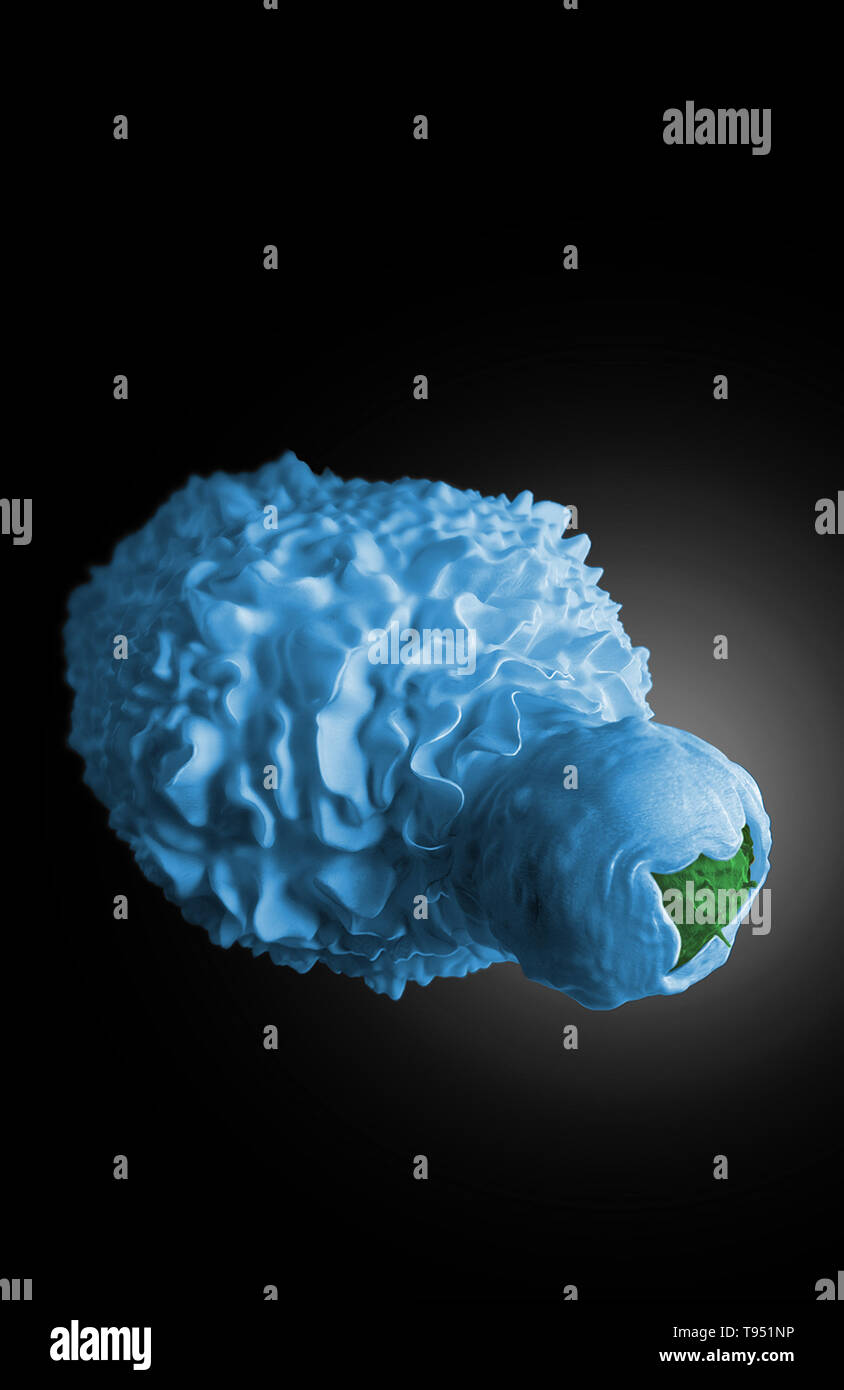 Artist's model of a dendritic cell engulfing an HIV-infected T cell. A dendritic cell is an antigen-presenting leukocyte found in the skin, mucosa, and lymphoid tissues that initiates a primary immune response by activating lymphocytes and secreting cytokines. A cell that has branching processes. Based on three-dimensional focused ion beam scanning electron microscopy (FIB-SEM) data. Created by Donald Bliss (NLM) and Sriram Subramaniam, 2012. This image has been colorized. Stock Photohttps://www.alamy.com/image-license-details/?v=1https://www.alamy.com/artists-model-of-a-dendritic-cell-engulfing-an-hiv-infected-t-cell-a-dendritic-cell-is-an-antigen-presenting-leukocyte-found-in-the-skin-mucosa-and-lymphoid-tissues-that-initiates-a-primary-immune-response-by-activating-lymphocytes-and-secreting-cytokines-a-cell-that-has-branching-processes-based-on-three-dimensional-focused-ion-beam-scanning-electron-microscopy-fib-sem-data-created-by-donald-bliss-nlm-and-sriram-subramaniam-2012-this-image-has-been-colorized-image246588210.html
Artist's model of a dendritic cell engulfing an HIV-infected T cell. A dendritic cell is an antigen-presenting leukocyte found in the skin, mucosa, and lymphoid tissues that initiates a primary immune response by activating lymphocytes and secreting cytokines. A cell that has branching processes. Based on three-dimensional focused ion beam scanning electron microscopy (FIB-SEM) data. Created by Donald Bliss (NLM) and Sriram Subramaniam, 2012. This image has been colorized. Stock Photohttps://www.alamy.com/image-license-details/?v=1https://www.alamy.com/artists-model-of-a-dendritic-cell-engulfing-an-hiv-infected-t-cell-a-dendritic-cell-is-an-antigen-presenting-leukocyte-found-in-the-skin-mucosa-and-lymphoid-tissues-that-initiates-a-primary-immune-response-by-activating-lymphocytes-and-secreting-cytokines-a-cell-that-has-branching-processes-based-on-three-dimensional-focused-ion-beam-scanning-electron-microscopy-fib-sem-data-created-by-donald-bliss-nlm-and-sriram-subramaniam-2012-this-image-has-been-colorized-image246588210.htmlRMT951NP–Artist's model of a dendritic cell engulfing an HIV-infected T cell. A dendritic cell is an antigen-presenting leukocyte found in the skin, mucosa, and lymphoid tissues that initiates a primary immune response by activating lymphocytes and secreting cytokines. A cell that has branching processes. Based on three-dimensional focused ion beam scanning electron microscopy (FIB-SEM) data. Created by Donald Bliss (NLM) and Sriram Subramaniam, 2012. This image has been colorized.
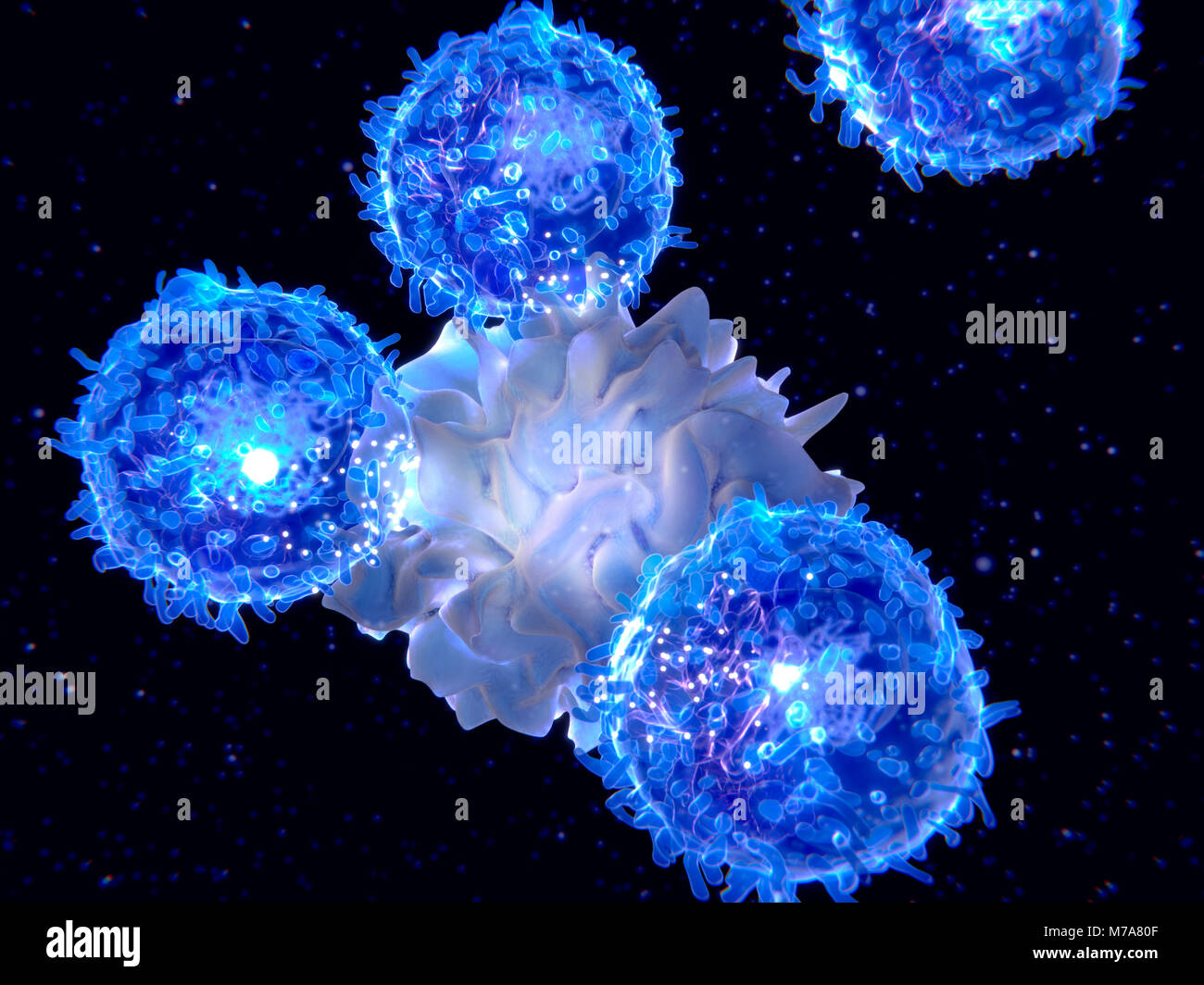 Illustration of a dendritic cell (centre) presenting an antigen to T-lymphocytes. Both cells are components of the body's immune system. Dendritic cells are antigen-presenting cells (APCs), that is, they present pathogens or foreign molecules (antigens) to other cells of the immune system to be eliminated. T-cells are activated by dendritic cells to effect an immune response. Stock Photohttps://www.alamy.com/image-license-details/?v=1https://www.alamy.com/stock-photo-illustration-of-a-dendritic-cell-centre-presenting-an-antigen-to-t-176632079.html
Illustration of a dendritic cell (centre) presenting an antigen to T-lymphocytes. Both cells are components of the body's immune system. Dendritic cells are antigen-presenting cells (APCs), that is, they present pathogens or foreign molecules (antigens) to other cells of the immune system to be eliminated. T-cells are activated by dendritic cells to effect an immune response. Stock Photohttps://www.alamy.com/image-license-details/?v=1https://www.alamy.com/stock-photo-illustration-of-a-dendritic-cell-centre-presenting-an-antigen-to-t-176632079.htmlRFM7A80F–Illustration of a dendritic cell (centre) presenting an antigen to T-lymphocytes. Both cells are components of the body's immune system. Dendritic cells are antigen-presenting cells (APCs), that is, they present pathogens or foreign molecules (antigens) to other cells of the immune system to be eliminated. T-cells are activated by dendritic cells to effect an immune response.
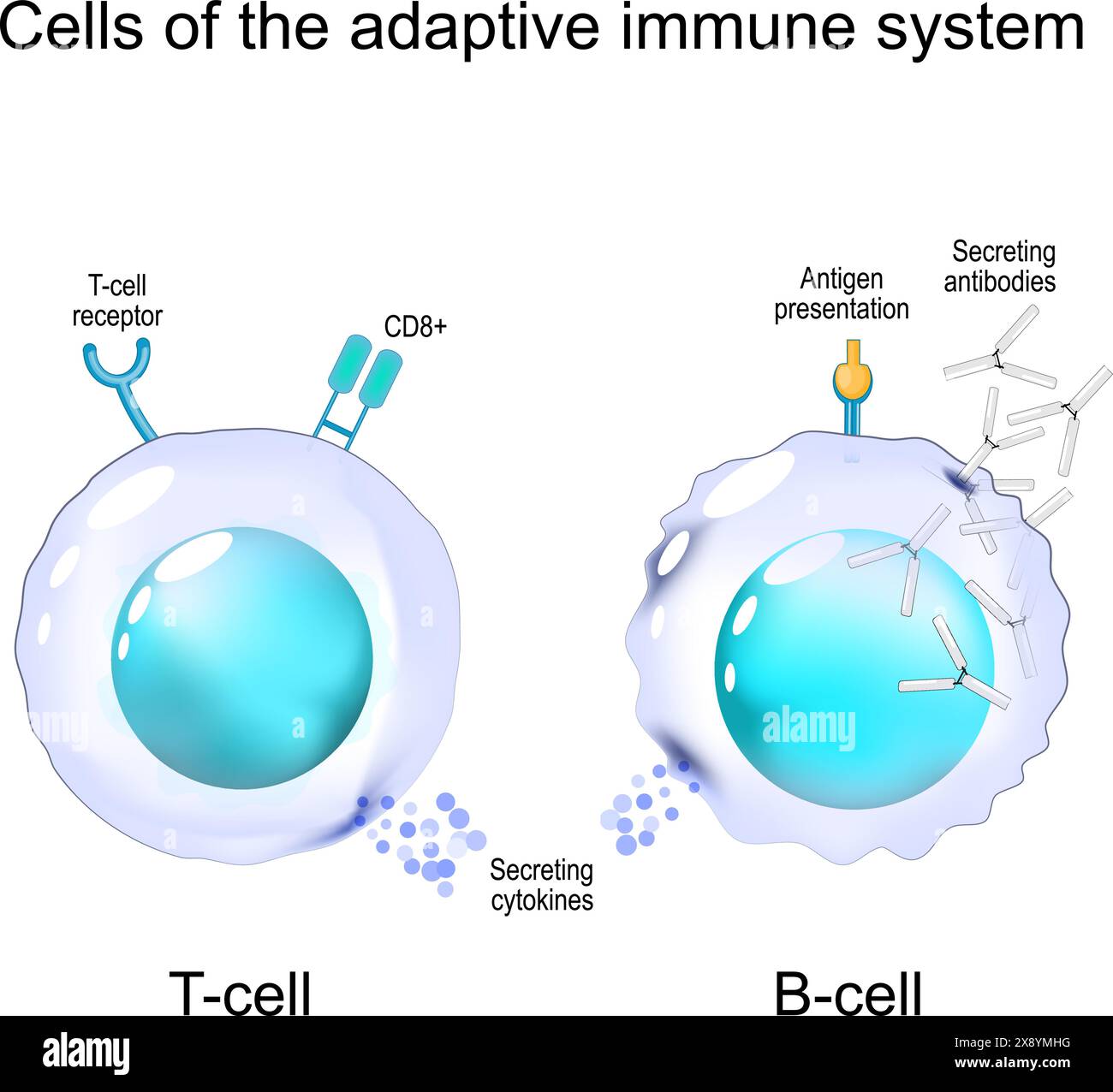 Cells of the adaptive immune system. Structure and Anatomy of T-cell and B-cell. Immunological memory. Lymphocytes of Cell-mediated immunity. Vector i Stock Vectorhttps://www.alamy.com/image-license-details/?v=1https://www.alamy.com/cells-of-the-adaptive-immune-system-structure-and-anatomy-of-t-cell-and-b-cell-immunological-memory-lymphocytes-of-cell-mediated-immunity-vector-i-image607889004.html
Cells of the adaptive immune system. Structure and Anatomy of T-cell and B-cell. Immunological memory. Lymphocytes of Cell-mediated immunity. Vector i Stock Vectorhttps://www.alamy.com/image-license-details/?v=1https://www.alamy.com/cells-of-the-adaptive-immune-system-structure-and-anatomy-of-t-cell-and-b-cell-immunological-memory-lymphocytes-of-cell-mediated-immunity-vector-i-image607889004.htmlRF2X8YMHG–Cells of the adaptive immune system. Structure and Anatomy of T-cell and B-cell. Immunological memory. Lymphocytes of Cell-mediated immunity. Vector i
 Dendritic cell activating T-cells, illustration Stock Photohttps://www.alamy.com/image-license-details/?v=1https://www.alamy.com/dendritic-cell-activating-t-cells-illustration-image436756249.html
Dendritic cell activating T-cells, illustration Stock Photohttps://www.alamy.com/image-license-details/?v=1https://www.alamy.com/dendritic-cell-activating-t-cells-illustration-image436756249.htmlRF2GAFY1D–Dendritic cell activating T-cells, illustration
 Immune cells - immunity Stock Photohttps://www.alamy.com/image-license-details/?v=1https://www.alamy.com/immune-cells-immunity-image466107250.html
Immune cells - immunity Stock Photohttps://www.alamy.com/image-license-details/?v=1https://www.alamy.com/immune-cells-immunity-image466107250.htmlRM2J290FE–Immune cells - immunity
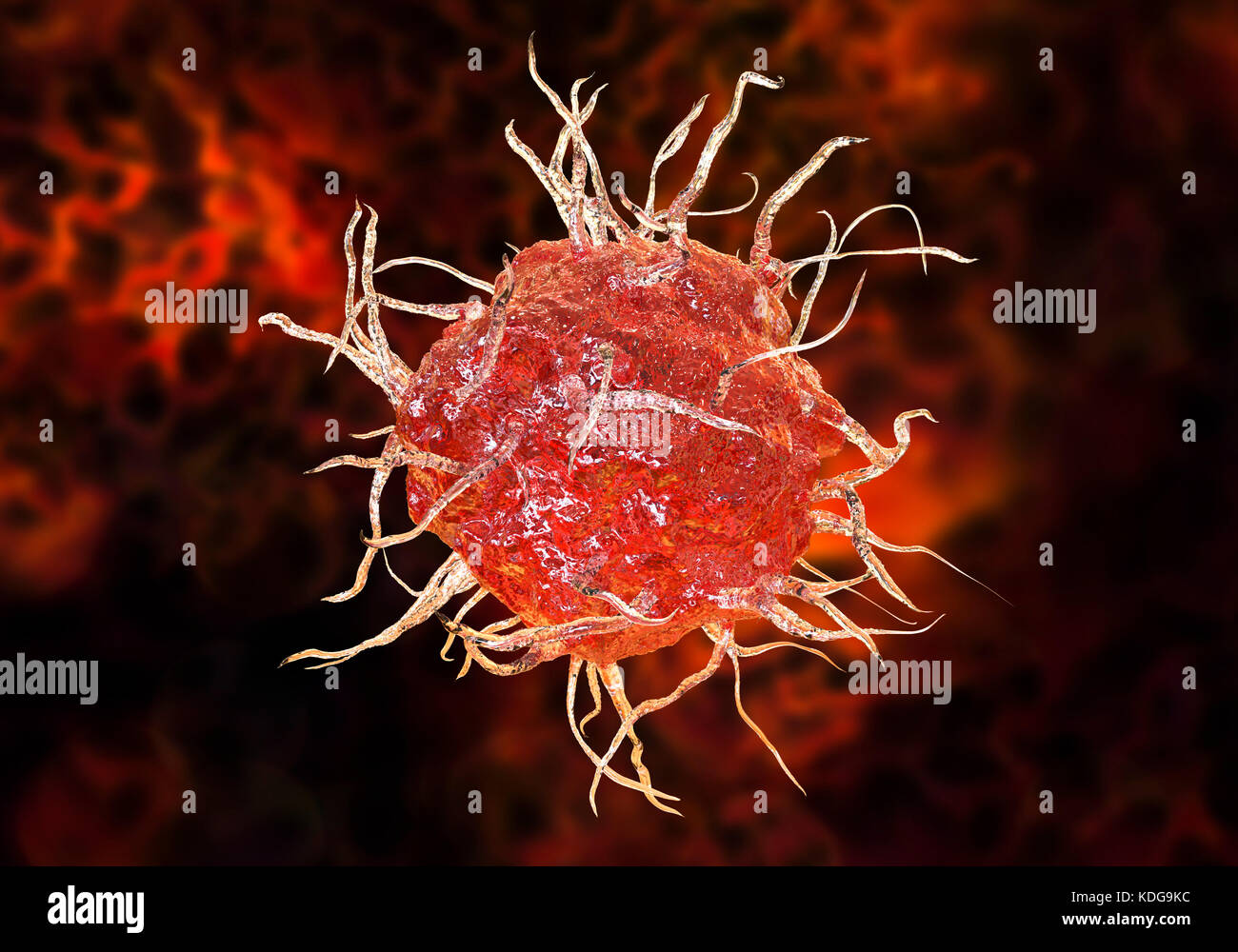 Dendritic cell, computer illustration. A dendritic cell is a type of white blood cell. It is an antigen- presenting cell (APC), which presents antigens to T lymphocytes, which can only recognise antigens when they are presented by APC. Stock Photohttps://www.alamy.com/image-license-details/?v=1https://www.alamy.com/stock-image-dendritic-cell-computer-illustration-a-dendritic-cell-is-a-type-of-163242672.html
Dendritic cell, computer illustration. A dendritic cell is a type of white blood cell. It is an antigen- presenting cell (APC), which presents antigens to T lymphocytes, which can only recognise antigens when they are presented by APC. Stock Photohttps://www.alamy.com/image-license-details/?v=1https://www.alamy.com/stock-image-dendritic-cell-computer-illustration-a-dendritic-cell-is-a-type-of-163242672.htmlRFKDG9KC–Dendritic cell, computer illustration. A dendritic cell is a type of white blood cell. It is an antigen- presenting cell (APC), which presents antigens to T lymphocytes, which can only recognise antigens when they are presented by APC.
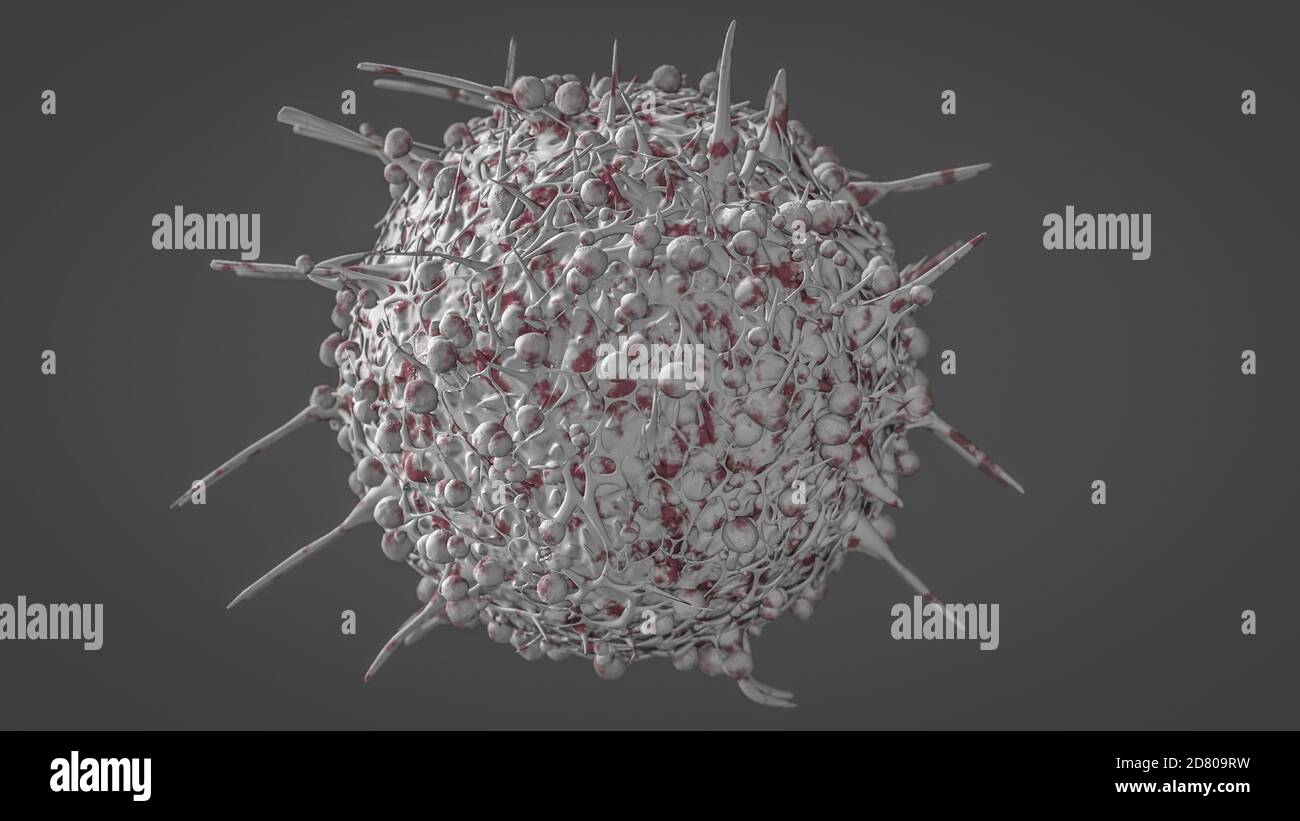 T-Cell Cancer Cell killer oncology treatment concept Stock Photohttps://www.alamy.com/image-license-details/?v=1https://www.alamy.com/t-cell-cancer-cell-killer-oncology-treatment-concept-image383553069.html
T-Cell Cancer Cell killer oncology treatment concept Stock Photohttps://www.alamy.com/image-license-details/?v=1https://www.alamy.com/t-cell-cancer-cell-killer-oncology-treatment-concept-image383553069.htmlRF2D809RW–T-Cell Cancer Cell killer oncology treatment concept
 Artistic rendering of the surface of a human dendritic cell illustrating the unexpected discovery of sheet-like processes that f Stock Photohttps://www.alamy.com/image-license-details/?v=1https://www.alamy.com/stock-photo-artistic-rendering-of-the-surface-of-a-human-dendritic-cell-illustrating-76547745.html
Artistic rendering of the surface of a human dendritic cell illustrating the unexpected discovery of sheet-like processes that f Stock Photohttps://www.alamy.com/image-license-details/?v=1https://www.alamy.com/stock-photo-artistic-rendering-of-the-surface-of-a-human-dendritic-cell-illustrating-76547745.htmlRFECF1C1–Artistic rendering of the surface of a human dendritic cell illustrating the unexpected discovery of sheet-like processes that f
 CAR T cell therapy in lung cancer (LC) - closeup view 3d illustration Stock Photohttps://www.alamy.com/image-license-details/?v=1https://www.alamy.com/car-t-cell-therapy-in-lung-cancer-lc-closeup-view-3d-illustration-image636363639.html
CAR T cell therapy in lung cancer (LC) - closeup view 3d illustration Stock Photohttps://www.alamy.com/image-license-details/?v=1https://www.alamy.com/car-t-cell-therapy-in-lung-cancer-lc-closeup-view-3d-illustration-image636363639.htmlRF2YY8T8R–CAR T cell therapy in lung cancer (LC) - closeup view 3d illustration
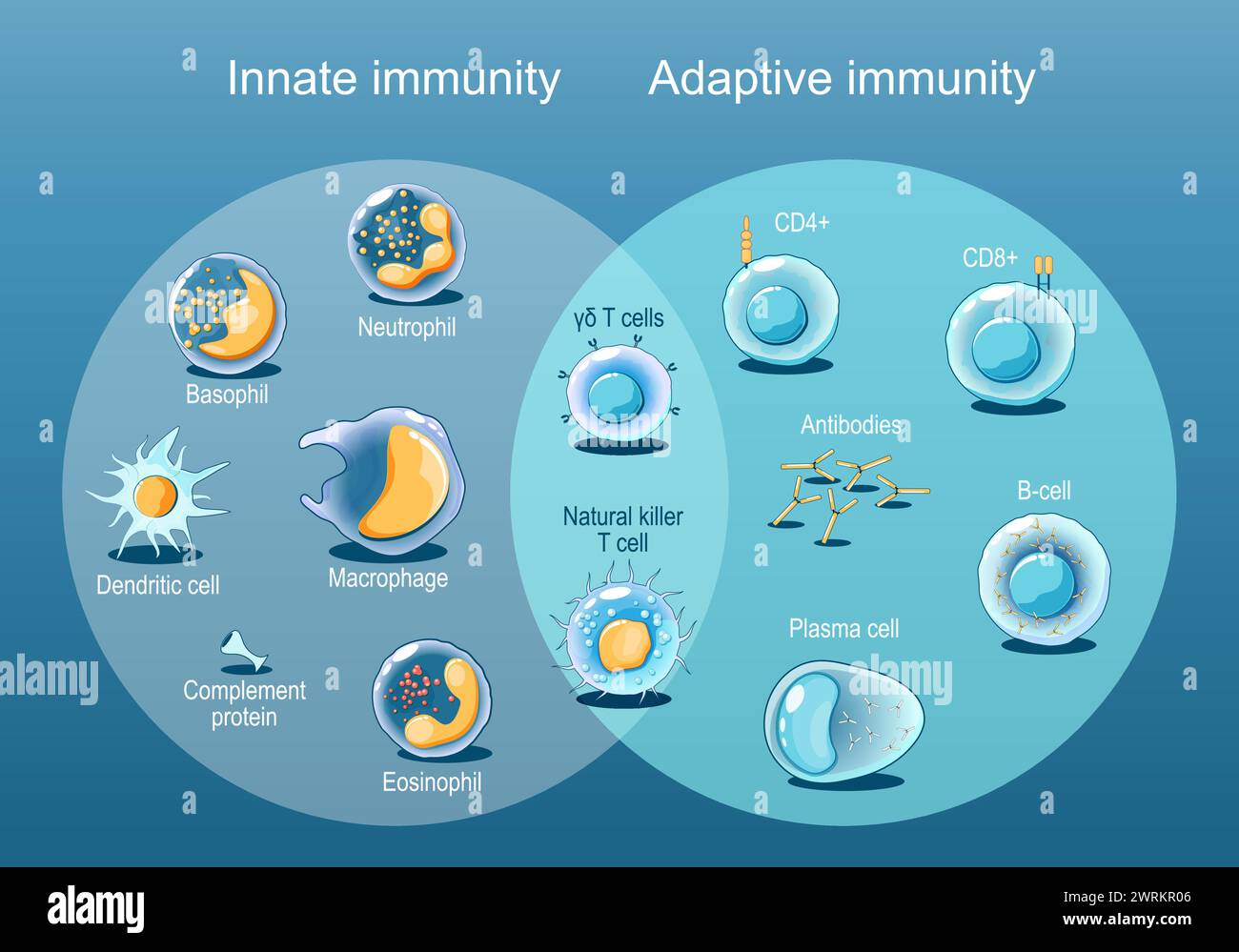 Adaptive and Innate immunity. Cells of The Immune System. Immune response. Immunology infographic. Rapid and slow response. Isometric flat vector Ill Stock Vectorhttps://www.alamy.com/image-license-details/?v=1https://www.alamy.com/adaptive-and-innate-immunity-cells-of-the-immune-system-immune-response-immunology-infographic-rapid-and-slow-response-isometric-flat-vector-ill-image599724726.html
Adaptive and Innate immunity. Cells of The Immune System. Immune response. Immunology infographic. Rapid and slow response. Isometric flat vector Ill Stock Vectorhttps://www.alamy.com/image-license-details/?v=1https://www.alamy.com/adaptive-and-innate-immunity-cells-of-the-immune-system-immune-response-immunology-infographic-rapid-and-slow-response-isometric-flat-vector-ill-image599724726.htmlRF2WRKR06–Adaptive and Innate immunity. Cells of The Immune System. Immune response. Immunology infographic. Rapid and slow response. Isometric flat vector Ill
 Monoclonal antibody treatment in lung cancer (LC) - isometric view 3d illustration Stock Photohttps://www.alamy.com/image-license-details/?v=1https://www.alamy.com/monoclonal-antibody-treatment-in-lung-cancer-lc-isometric-view-3d-illustration-image613363136.html
Monoclonal antibody treatment in lung cancer (LC) - isometric view 3d illustration Stock Photohttps://www.alamy.com/image-license-details/?v=1https://www.alamy.com/monoclonal-antibody-treatment-in-lung-cancer-lc-isometric-view-3d-illustration-image613363136.htmlRF2XHW2X8–Monoclonal antibody treatment in lung cancer (LC) - isometric view 3d illustration
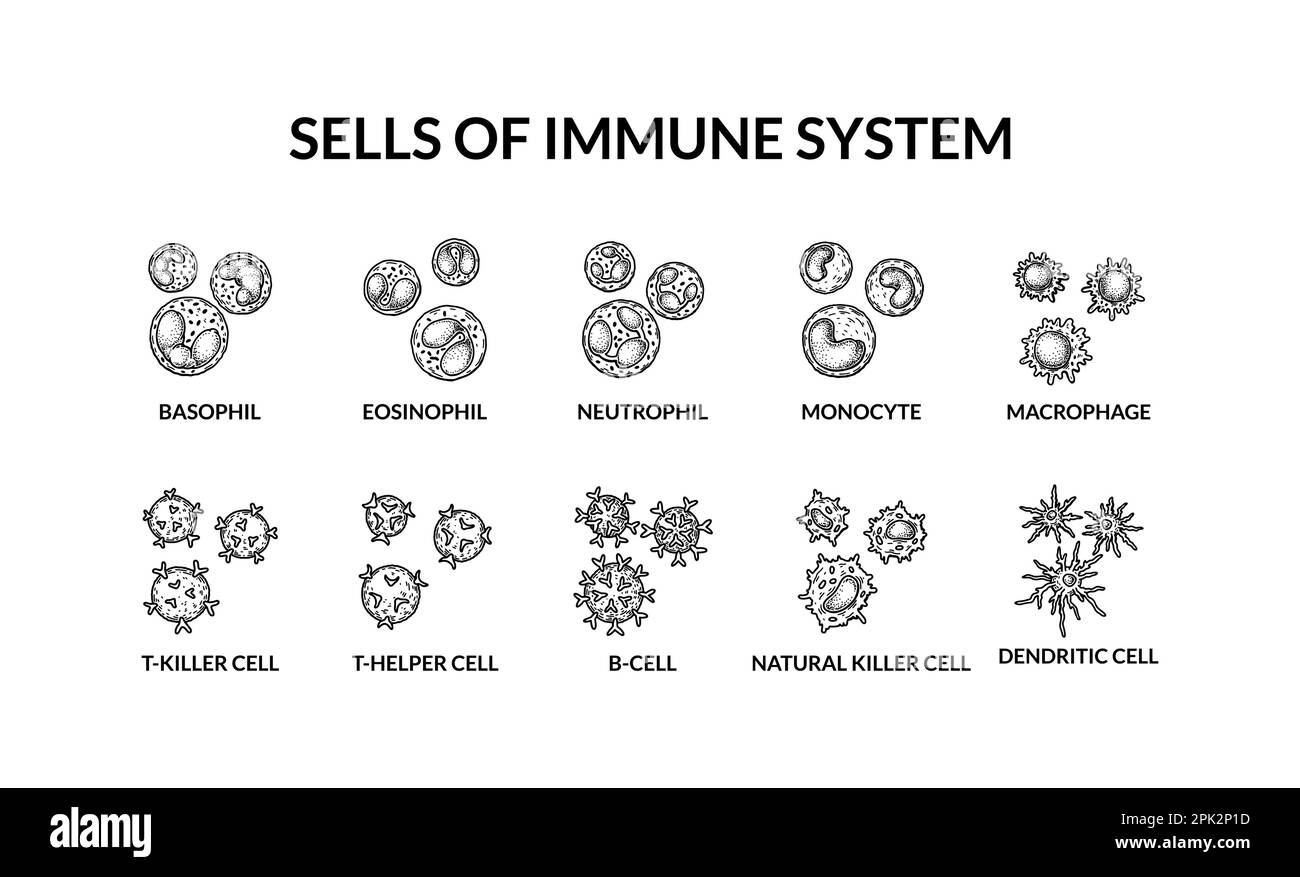 Cells of adaptive immune system. Human cells with names. Scientific microbiology vector illustration in sketch style. blood cellular components format Stock Vectorhttps://www.alamy.com/image-license-details/?v=1https://www.alamy.com/cells-of-adaptive-immune-system-human-cells-with-names-scientific-microbiology-vector-illustration-in-sketch-style-blood-cellular-components-format-image545261065.html
Cells of adaptive immune system. Human cells with names. Scientific microbiology vector illustration in sketch style. blood cellular components format Stock Vectorhttps://www.alamy.com/image-license-details/?v=1https://www.alamy.com/cells-of-adaptive-immune-system-human-cells-with-names-scientific-microbiology-vector-illustration-in-sketch-style-blood-cellular-components-format-image545261065.htmlRF2PK2P1D–Cells of adaptive immune system. Human cells with names. Scientific microbiology vector illustration in sketch style. blood cellular components format
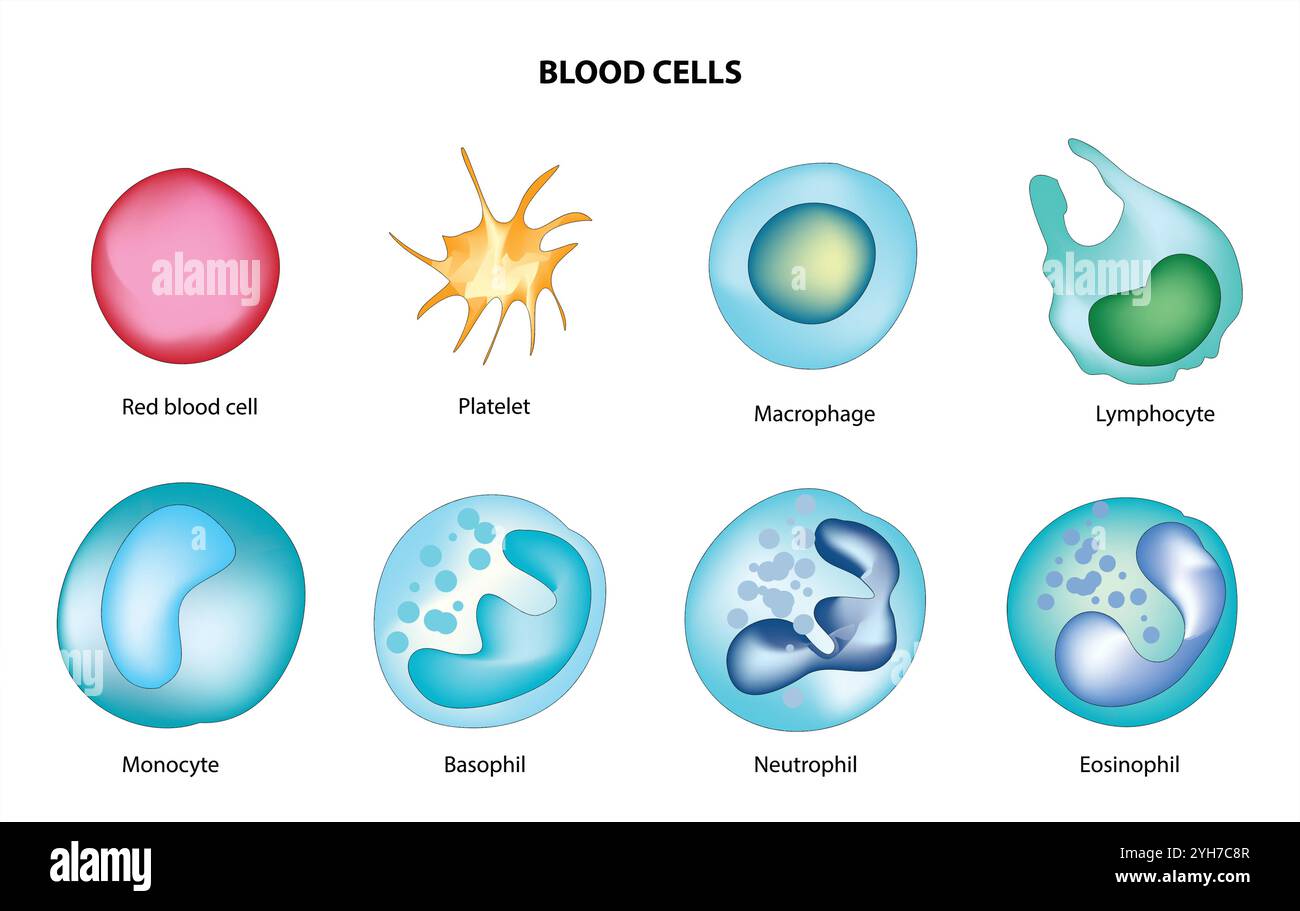 Blood cells Stock Vectorhttps://www.alamy.com/image-license-details/?v=1https://www.alamy.com/blood-cells-image630185719.html
Blood cells Stock Vectorhttps://www.alamy.com/image-license-details/?v=1https://www.alamy.com/blood-cells-image630185719.htmlRF2YH7C8R–Blood cells
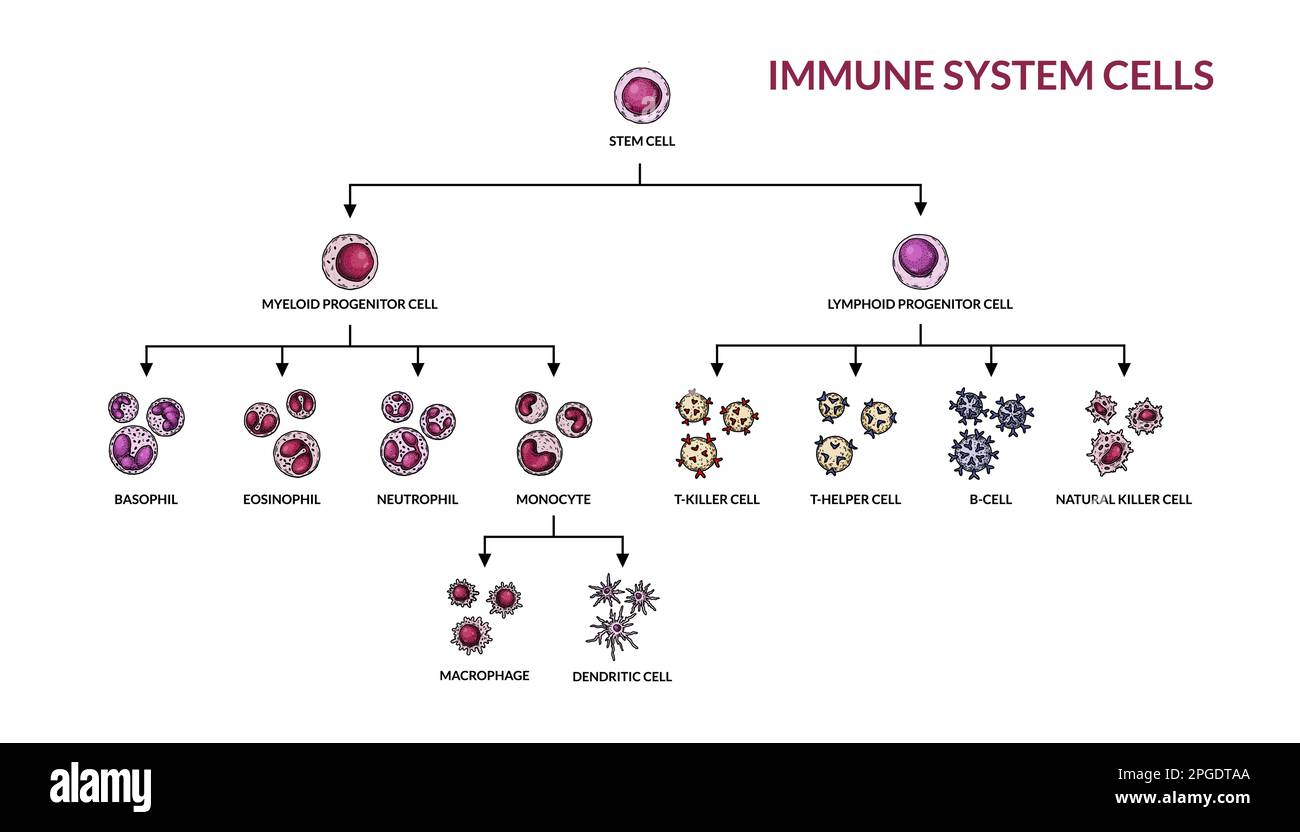 Cells of adaptive immune system. Human cells with names. Scientific microbiology vector illustration in sketch style. blood cellular components format Stock Vectorhttps://www.alamy.com/image-license-details/?v=1https://www.alamy.com/cells-of-adaptive-immune-system-human-cells-with-names-scientific-microbiology-vector-illustration-in-sketch-style-blood-cellular-components-format-image543660386.html
Cells of adaptive immune system. Human cells with names. Scientific microbiology vector illustration in sketch style. blood cellular components format Stock Vectorhttps://www.alamy.com/image-license-details/?v=1https://www.alamy.com/cells-of-adaptive-immune-system-human-cells-with-names-scientific-microbiology-vector-illustration-in-sketch-style-blood-cellular-components-format-image543660386.htmlRF2PGDTAA–Cells of adaptive immune system. Human cells with names. Scientific microbiology vector illustration in sketch style. blood cellular components format
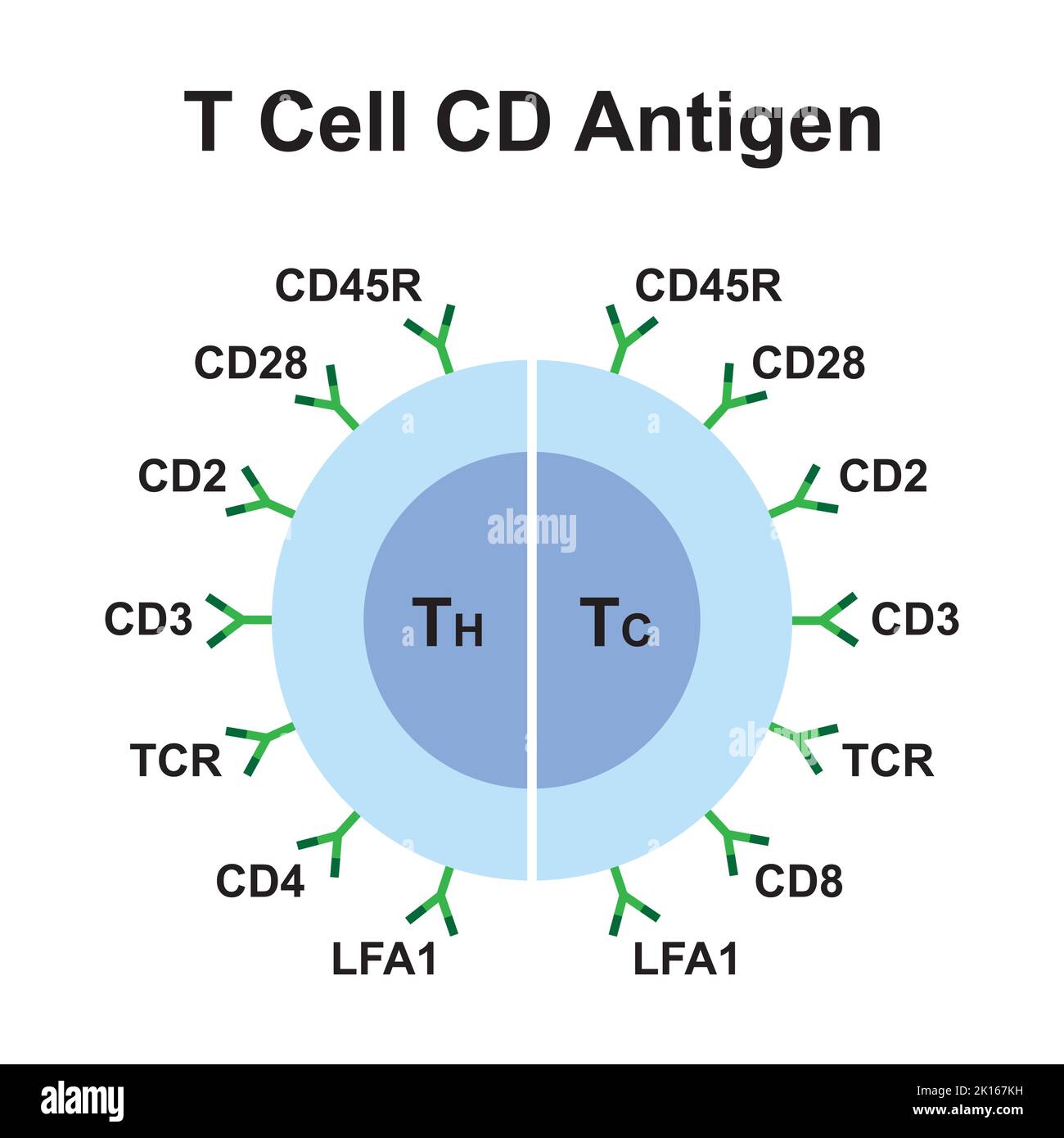 Scientific Designing of T Cell CD Antigen. Colorful Symbols. Vector Illustration. Stock Vectorhttps://www.alamy.com/image-license-details/?v=1https://www.alamy.com/scientific-designing-of-t-cell-cd-antigen-colorful-symbols-vector-illustration-image482642709.html
Scientific Designing of T Cell CD Antigen. Colorful Symbols. Vector Illustration. Stock Vectorhttps://www.alamy.com/image-license-details/?v=1https://www.alamy.com/scientific-designing-of-t-cell-cd-antigen-colorful-symbols-vector-illustration-image482642709.htmlRF2K167KH–Scientific Designing of T Cell CD Antigen. Colorful Symbols. Vector Illustration.
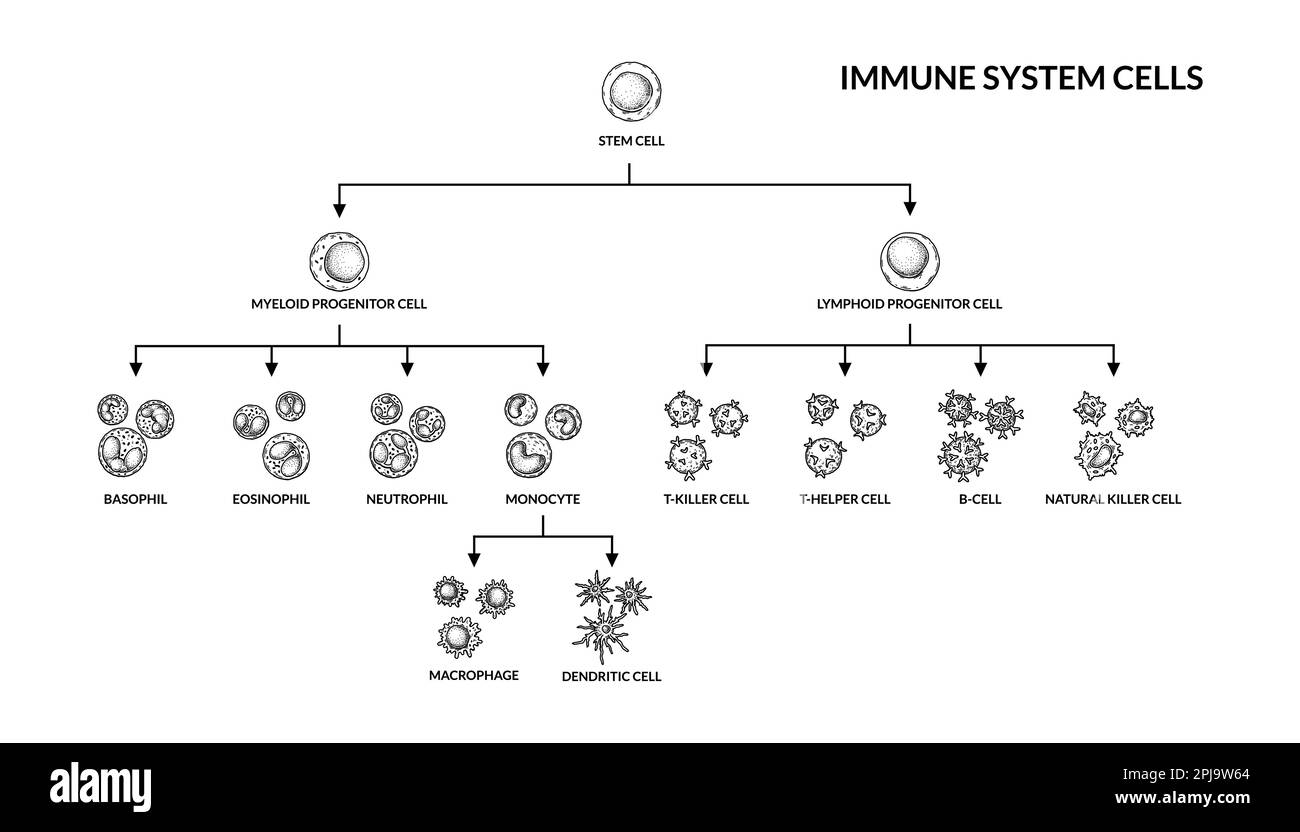 Cells of adaptive immune system. Human cells with names. Scientific microbiology vector illustration in sketch style. blood cellular components format Stock Vectorhttps://www.alamy.com/image-license-details/?v=1https://www.alamy.com/cells-of-adaptive-immune-system-human-cells-with-names-scientific-microbiology-vector-illustration-in-sketch-style-blood-cellular-components-format-image544802556.html
Cells of adaptive immune system. Human cells with names. Scientific microbiology vector illustration in sketch style. blood cellular components format Stock Vectorhttps://www.alamy.com/image-license-details/?v=1https://www.alamy.com/cells-of-adaptive-immune-system-human-cells-with-names-scientific-microbiology-vector-illustration-in-sketch-style-blood-cellular-components-format-image544802556.htmlRF2PJ9W64–Cells of adaptive immune system. Human cells with names. Scientific microbiology vector illustration in sketch style. blood cellular components format
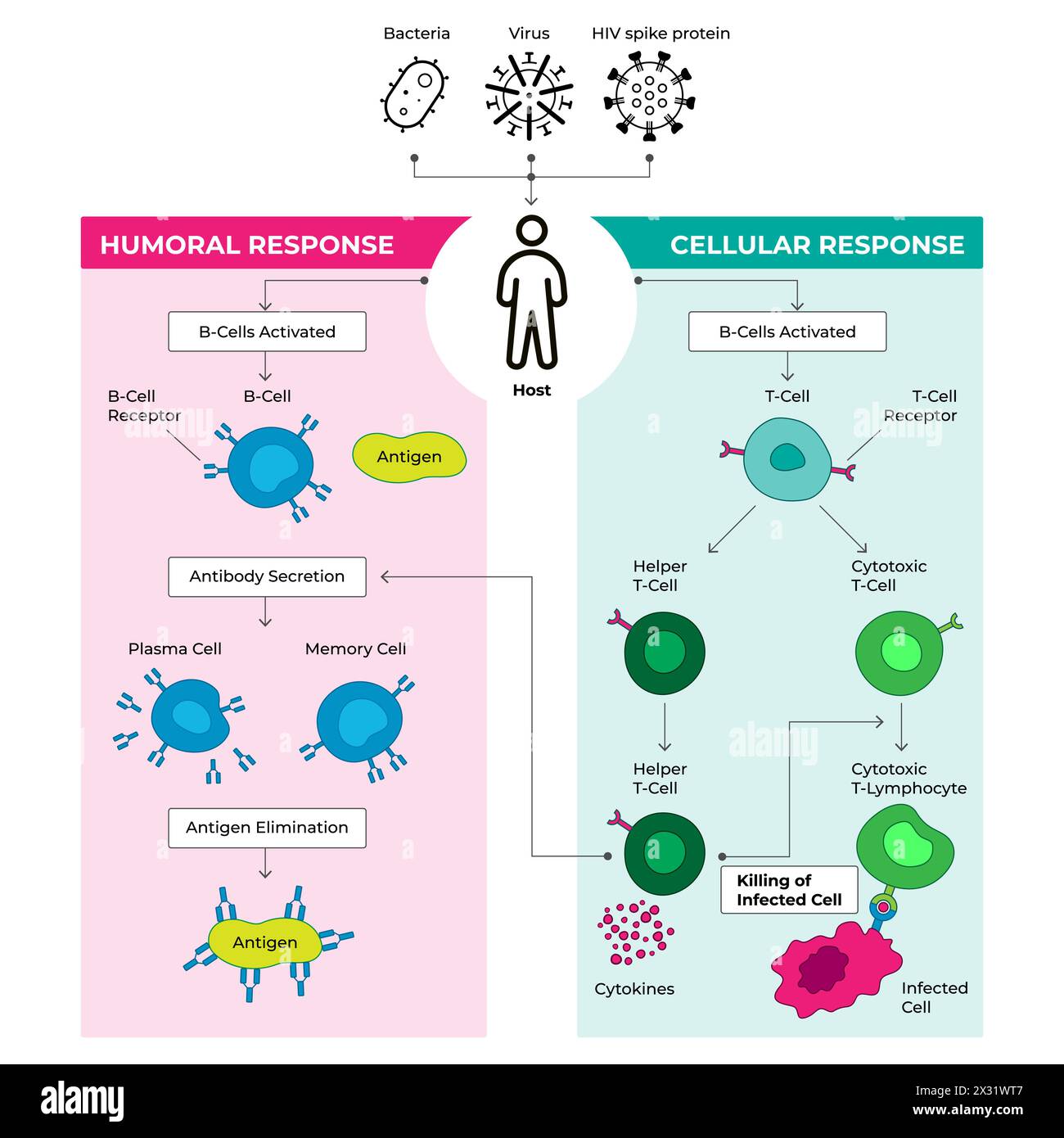 Cells of the immune system, vector illustration. Labeled educational division scheme. Humoral and cellular response chart. Stock Vectorhttps://www.alamy.com/image-license-details/?v=1https://www.alamy.com/cells-of-the-immune-system-vector-illustration-labeled-educational-division-scheme-humoral-and-cellular-response-chart-image604249079.html
Cells of the immune system, vector illustration. Labeled educational division scheme. Humoral and cellular response chart. Stock Vectorhttps://www.alamy.com/image-license-details/?v=1https://www.alamy.com/cells-of-the-immune-system-vector-illustration-labeled-educational-division-scheme-humoral-and-cellular-response-chart-image604249079.htmlRF2X31WT7–Cells of the immune system, vector illustration. Labeled educational division scheme. Humoral and cellular response chart.
 Cells of adaptive immune system. Human cells with names. Scientific microbiology vector illustration in sketch style. blood cellular components format Stock Vectorhttps://www.alamy.com/image-license-details/?v=1https://www.alamy.com/cells-of-adaptive-immune-system-human-cells-with-names-scientific-microbiology-vector-illustration-in-sketch-style-blood-cellular-components-format-image544016262.html
Cells of adaptive immune system. Human cells with names. Scientific microbiology vector illustration in sketch style. blood cellular components format Stock Vectorhttps://www.alamy.com/image-license-details/?v=1https://www.alamy.com/cells-of-adaptive-immune-system-human-cells-with-names-scientific-microbiology-vector-illustration-in-sketch-style-blood-cellular-components-format-image544016262.htmlRF2PH2286–Cells of adaptive immune system. Human cells with names. Scientific microbiology vector illustration in sketch style. blood cellular components format
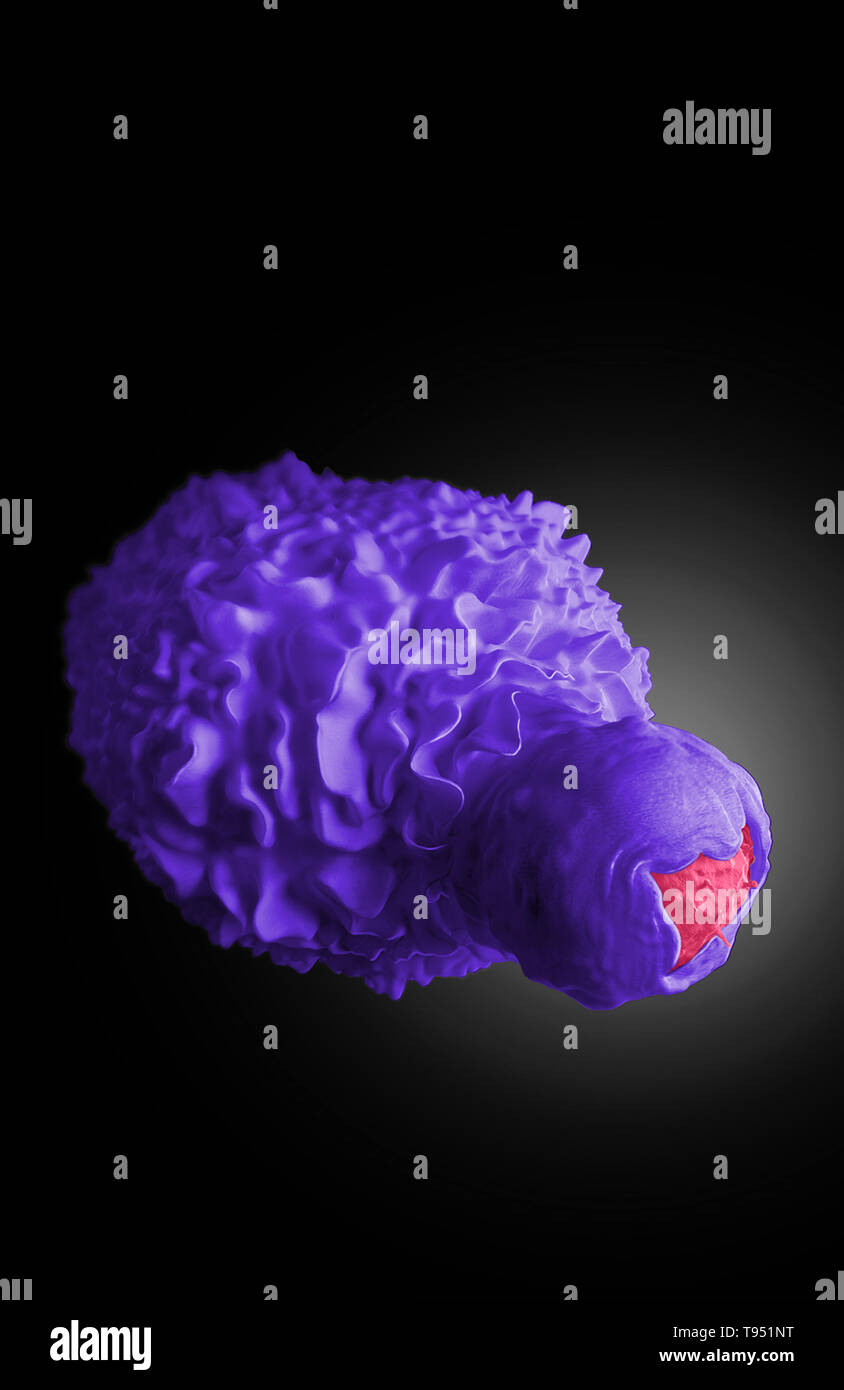 Artist's model of a dendritic cell engulfing an HIV-infected T cell. A dendritic cell is an antigen-presenting leukocyte found in the skin, mucosa, and lymphoid tissues that initiates a primary immune response by activating lymphocytes and secreting cytokines. A cell that has branching processes. Based on three-dimensional focused ion beam scanning electron microscopy (FIB-SEM) data. Created by Donald Bliss (NLM) and Sriram Subramaniam, 2012. This image has been colorized. Stock Photohttps://www.alamy.com/image-license-details/?v=1https://www.alamy.com/artists-model-of-a-dendritic-cell-engulfing-an-hiv-infected-t-cell-a-dendritic-cell-is-an-antigen-presenting-leukocyte-found-in-the-skin-mucosa-and-lymphoid-tissues-that-initiates-a-primary-immune-response-by-activating-lymphocytes-and-secreting-cytokines-a-cell-that-has-branching-processes-based-on-three-dimensional-focused-ion-beam-scanning-electron-microscopy-fib-sem-data-created-by-donald-bliss-nlm-and-sriram-subramaniam-2012-this-image-has-been-colorized-image246588212.html
Artist's model of a dendritic cell engulfing an HIV-infected T cell. A dendritic cell is an antigen-presenting leukocyte found in the skin, mucosa, and lymphoid tissues that initiates a primary immune response by activating lymphocytes and secreting cytokines. A cell that has branching processes. Based on three-dimensional focused ion beam scanning electron microscopy (FIB-SEM) data. Created by Donald Bliss (NLM) and Sriram Subramaniam, 2012. This image has been colorized. Stock Photohttps://www.alamy.com/image-license-details/?v=1https://www.alamy.com/artists-model-of-a-dendritic-cell-engulfing-an-hiv-infected-t-cell-a-dendritic-cell-is-an-antigen-presenting-leukocyte-found-in-the-skin-mucosa-and-lymphoid-tissues-that-initiates-a-primary-immune-response-by-activating-lymphocytes-and-secreting-cytokines-a-cell-that-has-branching-processes-based-on-three-dimensional-focused-ion-beam-scanning-electron-microscopy-fib-sem-data-created-by-donald-bliss-nlm-and-sriram-subramaniam-2012-this-image-has-been-colorized-image246588212.htmlRMT951NT–Artist's model of a dendritic cell engulfing an HIV-infected T cell. A dendritic cell is an antigen-presenting leukocyte found in the skin, mucosa, and lymphoid tissues that initiates a primary immune response by activating lymphocytes and secreting cytokines. A cell that has branching processes. Based on three-dimensional focused ion beam scanning electron microscopy (FIB-SEM) data. Created by Donald Bliss (NLM) and Sriram Subramaniam, 2012. This image has been colorized.
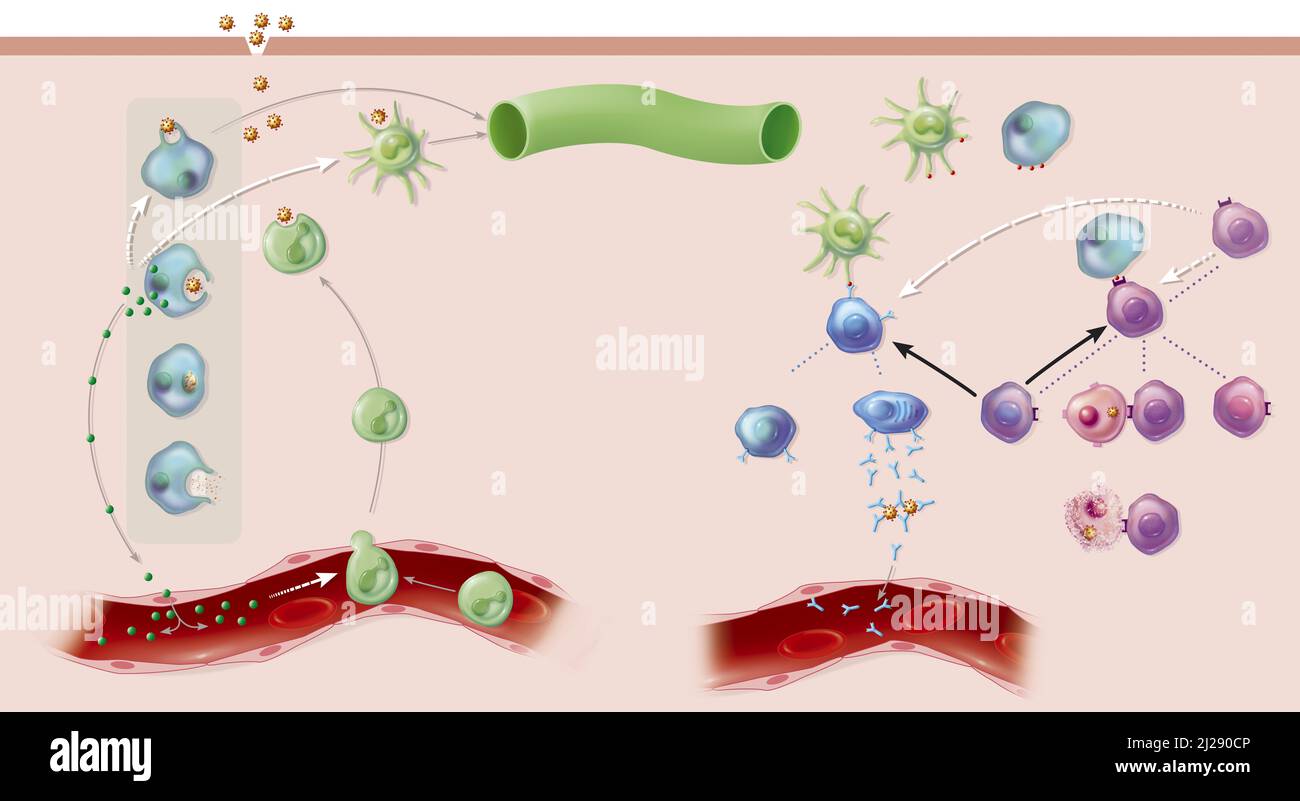 Innate immunity - adaptive immunity Stock Photohttps://www.alamy.com/image-license-details/?v=1https://www.alamy.com/innate-immunity-adaptive-immunity-image466107174.html
Innate immunity - adaptive immunity Stock Photohttps://www.alamy.com/image-license-details/?v=1https://www.alamy.com/innate-immunity-adaptive-immunity-image466107174.htmlRM2J290CP–Innate immunity - adaptive immunity
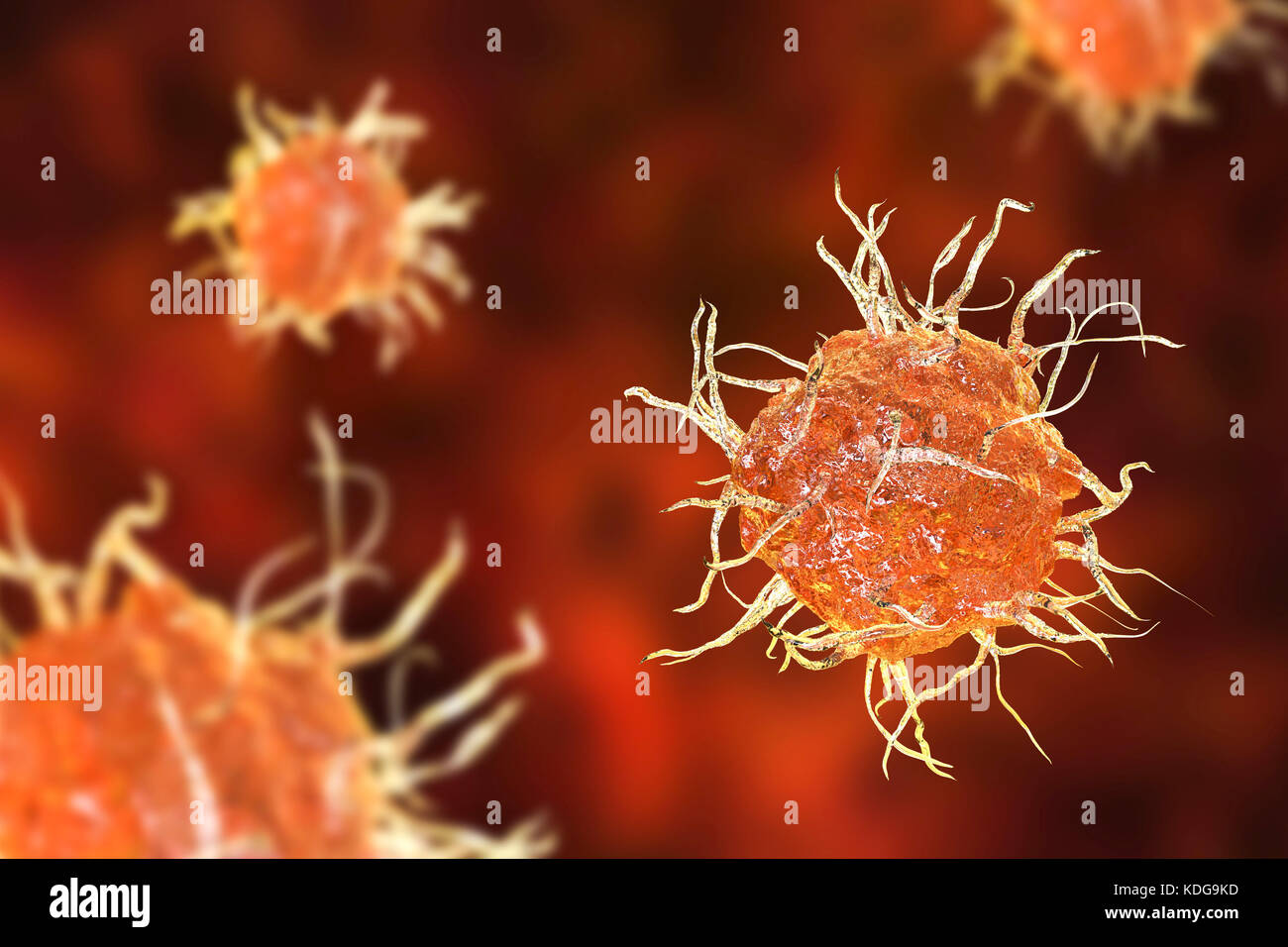 Dendritic cell, computer illustration. A dendritic cell is a type of white blood cell. It is an antigen- presenting cell (APC), which presents antigens to T lymphocytes, which can only recognise antigens when they are presented by APC. Stock Photohttps://www.alamy.com/image-license-details/?v=1https://www.alamy.com/stock-image-dendritic-cell-computer-illustration-a-dendritic-cell-is-a-type-of-163242673.html
Dendritic cell, computer illustration. A dendritic cell is a type of white blood cell. It is an antigen- presenting cell (APC), which presents antigens to T lymphocytes, which can only recognise antigens when they are presented by APC. Stock Photohttps://www.alamy.com/image-license-details/?v=1https://www.alamy.com/stock-image-dendritic-cell-computer-illustration-a-dendritic-cell-is-a-type-of-163242673.htmlRFKDG9KD–Dendritic cell, computer illustration. A dendritic cell is a type of white blood cell. It is an antigen- presenting cell (APC), which presents antigens to T lymphocytes, which can only recognise antigens when they are presented by APC.
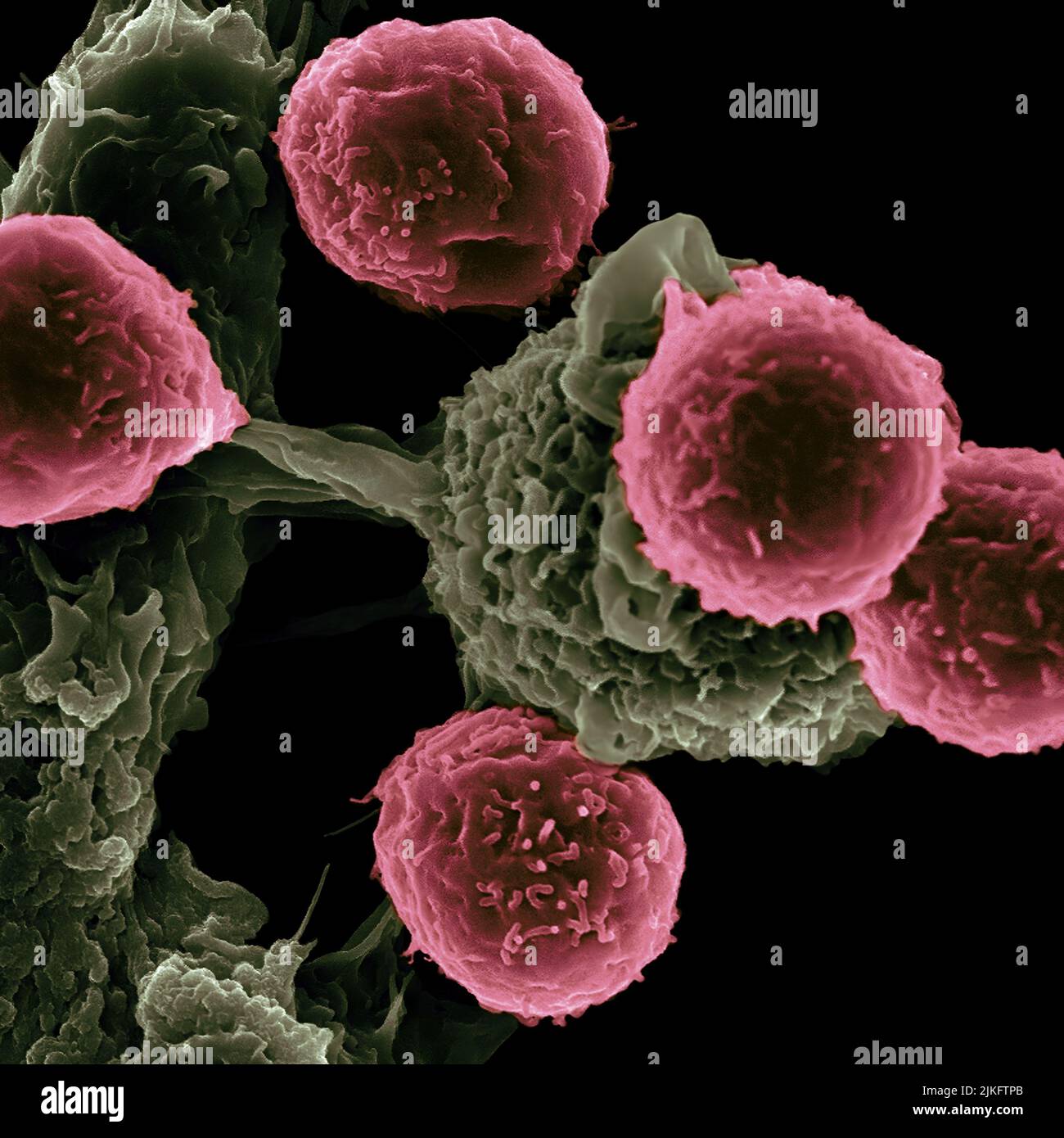 Researchers at the Texas Center for Cancer Nanomedicine (TCCN) have created particle-based vaccines for the treatment of cancer. The particles carry molecules that stimulate immune cells and cancer antigens (proteins) that direct the immune response. This scanning electron microscope image shows dendritic cells, pseudostained green, interacting with T cells, pseudostained pink. Dendritic cells internalize particles, provoke antigens and present peptides to T cells to direct immune responses. Stock Photohttps://www.alamy.com/image-license-details/?v=1https://www.alamy.com/researchers-at-the-texas-center-for-cancer-nanomedicine-tccn-have-created-particle-based-vaccines-for-the-treatment-of-cancer-the-particles-carry-molecules-that-stimulate-immune-cells-and-cancer-antigens-proteins-that-direct-the-immune-response-this-scanning-electron-microscope-image-shows-dendritic-cells-pseudostained-green-interacting-with-t-cells-pseudostained-pink-dendritic-cells-internalize-particles-provoke-antigens-and-present-peptides-to-t-cells-to-direct-immune-responses-image476707123.html
Researchers at the Texas Center for Cancer Nanomedicine (TCCN) have created particle-based vaccines for the treatment of cancer. The particles carry molecules that stimulate immune cells and cancer antigens (proteins) that direct the immune response. This scanning electron microscope image shows dendritic cells, pseudostained green, interacting with T cells, pseudostained pink. Dendritic cells internalize particles, provoke antigens and present peptides to T cells to direct immune responses. Stock Photohttps://www.alamy.com/image-license-details/?v=1https://www.alamy.com/researchers-at-the-texas-center-for-cancer-nanomedicine-tccn-have-created-particle-based-vaccines-for-the-treatment-of-cancer-the-particles-carry-molecules-that-stimulate-immune-cells-and-cancer-antigens-proteins-that-direct-the-immune-response-this-scanning-electron-microscope-image-shows-dendritic-cells-pseudostained-green-interacting-with-t-cells-pseudostained-pink-dendritic-cells-internalize-particles-provoke-antigens-and-present-peptides-to-t-cells-to-direct-immune-responses-image476707123.htmlRM2JKFTPB–Researchers at the Texas Center for Cancer Nanomedicine (TCCN) have created particle-based vaccines for the treatment of cancer. The particles carry molecules that stimulate immune cells and cancer antigens (proteins) that direct the immune response. This scanning electron microscope image shows dendritic cells, pseudostained green, interacting with T cells, pseudostained pink. Dendritic cells internalize particles, provoke antigens and present peptides to T cells to direct immune responses.
 Dendritic cell activating T-cells, illustration Stock Photohttps://www.alamy.com/image-license-details/?v=1https://www.alamy.com/dendritic-cell-activating-t-cells-illustration-image436756264.html
Dendritic cell activating T-cells, illustration Stock Photohttps://www.alamy.com/image-license-details/?v=1https://www.alamy.com/dendritic-cell-activating-t-cells-illustration-image436756264.htmlRF2GAFY20–Dendritic cell activating T-cells, illustration
 T cell and virus Stock Photohttps://www.alamy.com/image-license-details/?v=1https://www.alamy.com/stock-photo-t-cell-and-virus-70170163.html
T cell and virus Stock Photohttps://www.alamy.com/image-license-details/?v=1https://www.alamy.com/stock-photo-t-cell-and-virus-70170163.htmlRME24EN7–T cell and virus
 Monoclonal antibody treatment in lung cancer (LC) - closeup view 3d illustration Stock Photohttps://www.alamy.com/image-license-details/?v=1https://www.alamy.com/monoclonal-antibody-treatment-in-lung-cancer-lc-closeup-view-3d-illustration-image613363132.html
Monoclonal antibody treatment in lung cancer (LC) - closeup view 3d illustration Stock Photohttps://www.alamy.com/image-license-details/?v=1https://www.alamy.com/monoclonal-antibody-treatment-in-lung-cancer-lc-closeup-view-3d-illustration-image613363132.htmlRF2XHW2X4–Monoclonal antibody treatment in lung cancer (LC) - closeup view 3d illustration
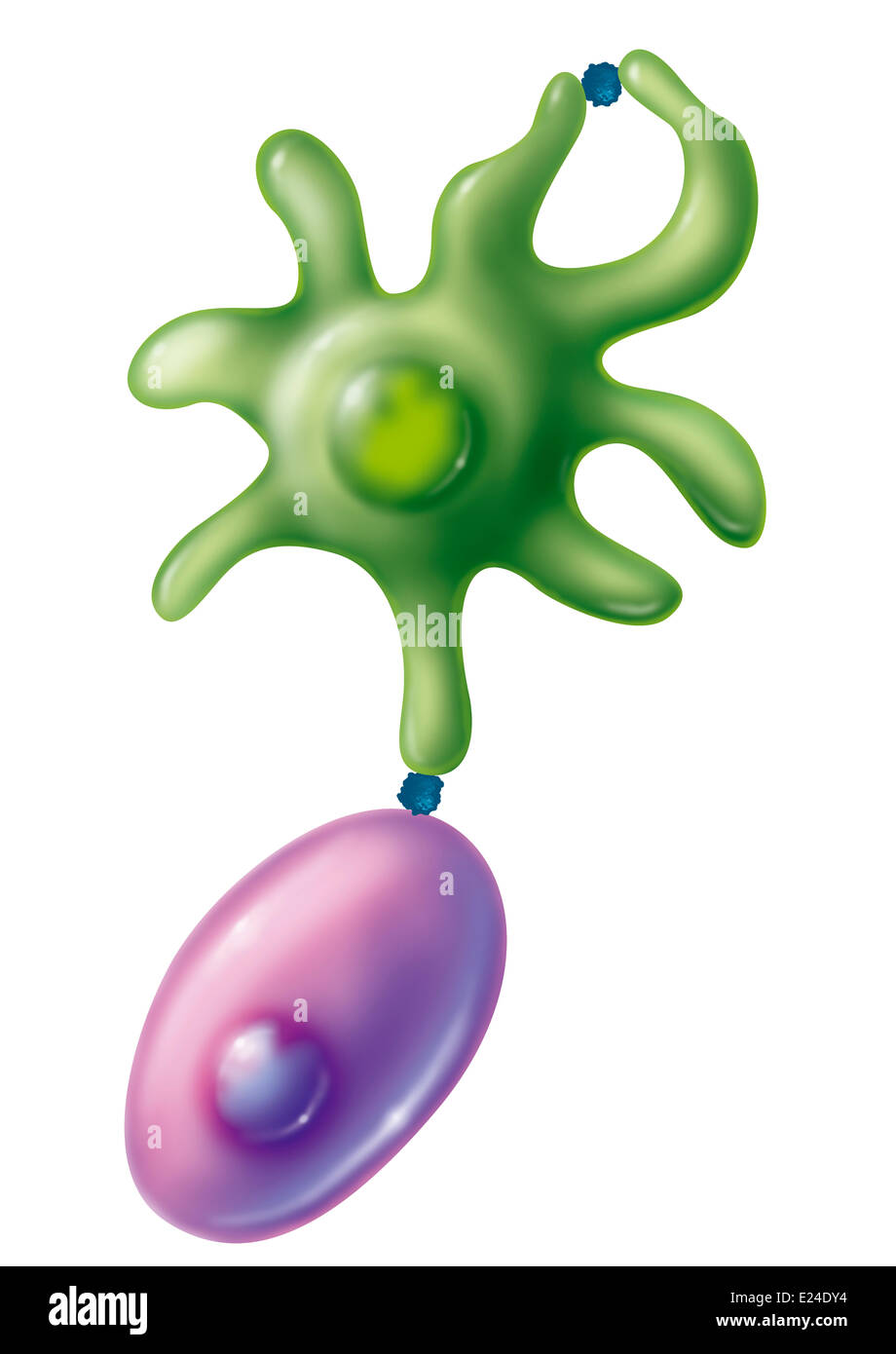 Immune system, I Stock Photohttps://www.alamy.com/image-license-details/?v=1https://www.alamy.com/stock-photo-immune-system-i-70169544.html
Immune system, I Stock Photohttps://www.alamy.com/image-license-details/?v=1https://www.alamy.com/stock-photo-immune-system-i-70169544.htmlRME24DY4–Immune system, I
 Lung cancer (LC) in the lung tissue isometric view 3d illustration Stock Photohttps://www.alamy.com/image-license-details/?v=1https://www.alamy.com/lung-cancer-lc-in-the-lung-tissue-isometric-view-3d-illustration-image636363613.html
Lung cancer (LC) in the lung tissue isometric view 3d illustration Stock Photohttps://www.alamy.com/image-license-details/?v=1https://www.alamy.com/lung-cancer-lc-in-the-lung-tissue-isometric-view-3d-illustration-image636363613.htmlRF2YY8T7W–Lung cancer (LC) in the lung tissue isometric view 3d illustration
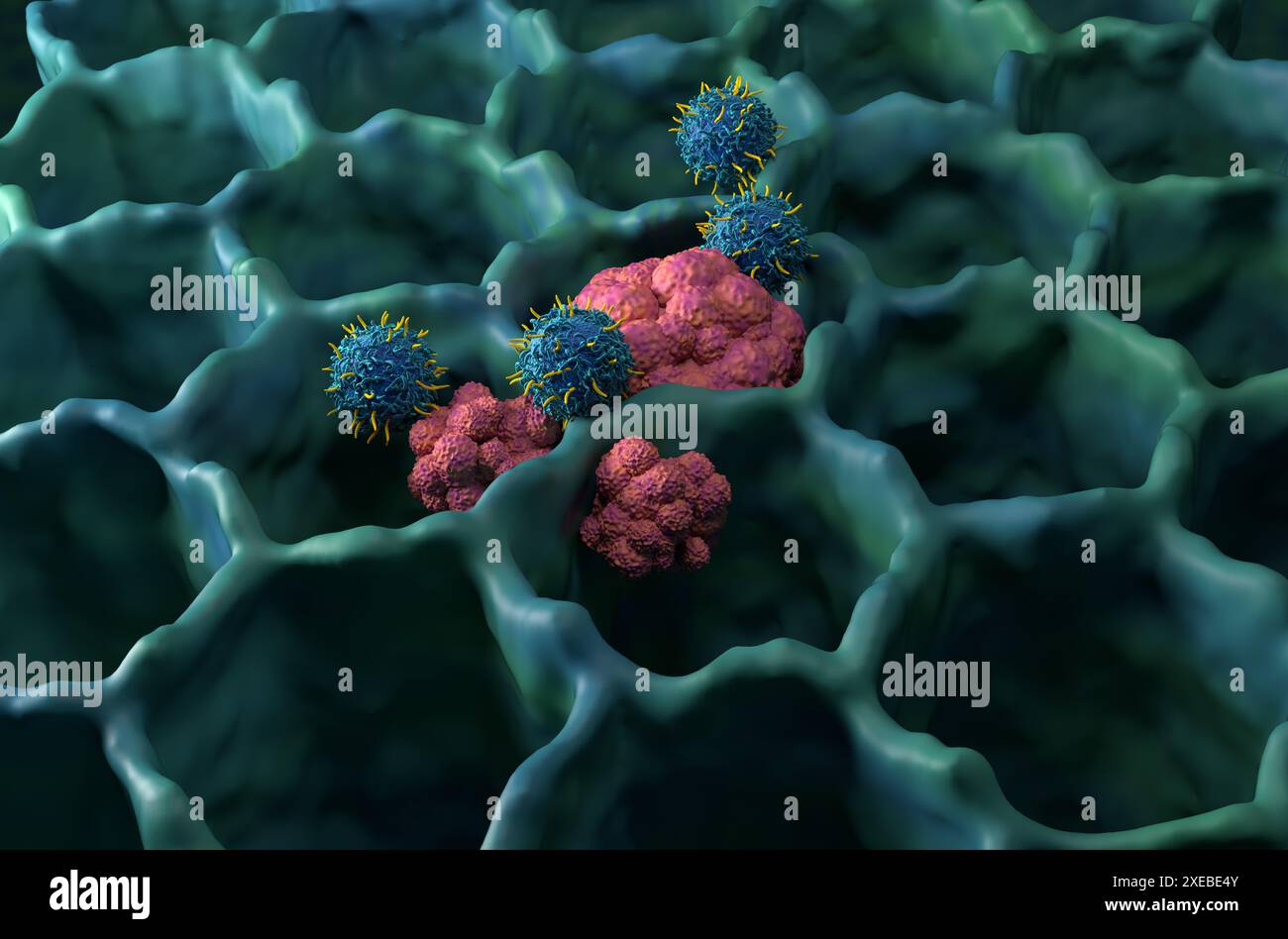 CAR T cell therapy in lung cancer (LC) - isometric view 3d illustration Stock Photohttps://www.alamy.com/image-license-details/?v=1https://www.alamy.com/car-t-cell-therapy-in-lung-cancer-lc-isometric-view-3d-illustration-image611220651.html
CAR T cell therapy in lung cancer (LC) - isometric view 3d illustration Stock Photohttps://www.alamy.com/image-license-details/?v=1https://www.alamy.com/car-t-cell-therapy-in-lung-cancer-lc-isometric-view-3d-illustration-image611220651.htmlRF2XEBE4Y–CAR T cell therapy in lung cancer (LC) - isometric view 3d illustration
 CAR T cell therapy in lung cancer (LC) - closeup view 3d illustration Stock Photohttps://www.alamy.com/image-license-details/?v=1https://www.alamy.com/car-t-cell-therapy-in-lung-cancer-lc-closeup-view-3d-illustration-image611225852.html
CAR T cell therapy in lung cancer (LC) - closeup view 3d illustration Stock Photohttps://www.alamy.com/image-license-details/?v=1https://www.alamy.com/car-t-cell-therapy-in-lung-cancer-lc-closeup-view-3d-illustration-image611225852.htmlRF2XEBMPM–CAR T cell therapy in lung cancer (LC) - closeup view 3d illustration
 CAR T cell therapy in lung cancer (LC) - closeup view 3d illustration Stock Photohttps://www.alamy.com/image-license-details/?v=1https://www.alamy.com/car-t-cell-therapy-in-lung-cancer-lc-closeup-view-3d-illustration-image611220650.html
CAR T cell therapy in lung cancer (LC) - closeup view 3d illustration Stock Photohttps://www.alamy.com/image-license-details/?v=1https://www.alamy.com/car-t-cell-therapy-in-lung-cancer-lc-closeup-view-3d-illustration-image611220650.htmlRF2XEBE4X–CAR T cell therapy in lung cancer (LC) - closeup view 3d illustration
 Monoclonal antibody therapy in lung cancer (LC) - closeup view 3d illustration Stock Photohttps://www.alamy.com/image-license-details/?v=1https://www.alamy.com/monoclonal-antibody-therapy-in-lung-cancer-lc-closeup-view-3d-illustration-image639122081.html
Monoclonal antibody therapy in lung cancer (LC) - closeup view 3d illustration Stock Photohttps://www.alamy.com/image-license-details/?v=1https://www.alamy.com/monoclonal-antibody-therapy-in-lung-cancer-lc-closeup-view-3d-illustration-image639122081.htmlRF2S3PEMH–Monoclonal antibody therapy in lung cancer (LC) - closeup view 3d illustration
 Lung cancer (LC) isometric view 3d illustration Stock Photohttps://www.alamy.com/image-license-details/?v=1https://www.alamy.com/lung-cancer-lc-isometric-view-3d-illustration-image630169006.html
Lung cancer (LC) isometric view 3d illustration Stock Photohttps://www.alamy.com/image-license-details/?v=1https://www.alamy.com/lung-cancer-lc-isometric-view-3d-illustration-image630169006.htmlRF2YH6JYX–Lung cancer (LC) isometric view 3d illustration
 Dendritic cell activating T-cells, illustration Stock Photohttps://www.alamy.com/image-license-details/?v=1https://www.alamy.com/dendritic-cell-activating-t-cells-illustration-image436756279.html
Dendritic cell activating T-cells, illustration Stock Photohttps://www.alamy.com/image-license-details/?v=1https://www.alamy.com/dendritic-cell-activating-t-cells-illustration-image436756279.htmlRF2GAFY2F–Dendritic cell activating T-cells, illustration
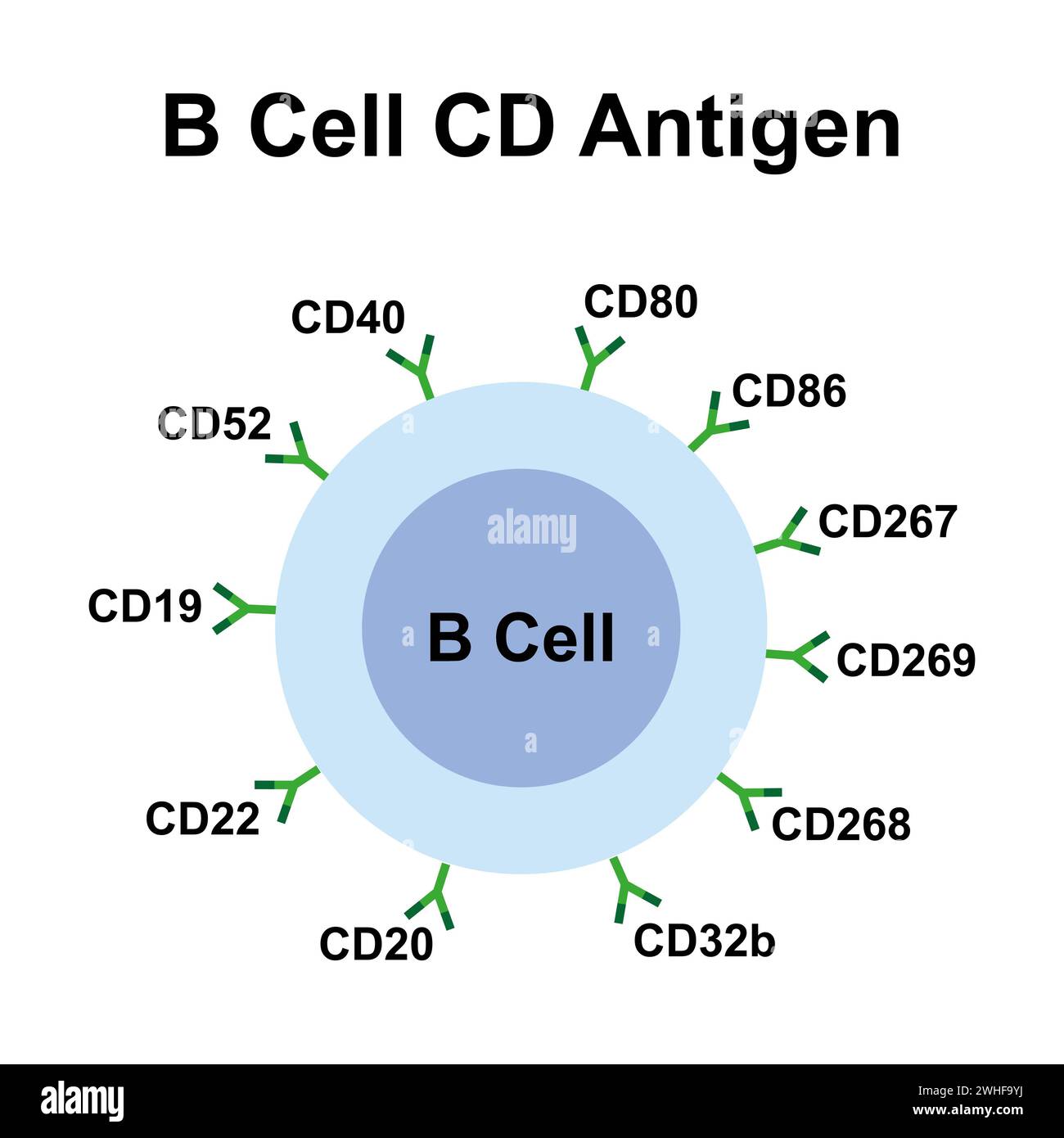 B cell CD antigen, illustration Stock Photohttps://www.alamy.com/image-license-details/?v=1https://www.alamy.com/b-cell-cd-antigen-illustration-image595938774.html
B cell CD antigen, illustration Stock Photohttps://www.alamy.com/image-license-details/?v=1https://www.alamy.com/b-cell-cd-antigen-illustration-image595938774.htmlRF2WHF9YJ–B cell CD antigen, illustration
 Illustration of signal proteins called cytokines (red dots) and two types of white blood cell: a dendritic cell (blue) and t helper cells (purple with red nucleus). Dendritic cells' primary function is presenting antigens, which are molecules which the immune system recognises as foreign. T helper cells are involved in chemically signalling other immune cells and coordinating the immune response. They do so by releasing cytokines. Stock Photohttps://www.alamy.com/image-license-details/?v=1https://www.alamy.com/illustration-of-signal-proteins-called-cytokines-red-dots-and-two-types-of-white-blood-cell-a-dendritic-cell-blue-and-t-helper-cells-purple-with-red-nucleus-dendritic-cells-primary-function-is-presenting-antigens-which-are-molecules-which-the-immune-system-recognises-as-foreign-t-helper-cells-are-involved-in-chemically-signalling-other-immune-cells-and-coordinating-the-immune-response-they-do-so-by-releasing-cytokines-image608979855.html
Illustration of signal proteins called cytokines (red dots) and two types of white blood cell: a dendritic cell (blue) and t helper cells (purple with red nucleus). Dendritic cells' primary function is presenting antigens, which are molecules which the immune system recognises as foreign. T helper cells are involved in chemically signalling other immune cells and coordinating the immune response. They do so by releasing cytokines. Stock Photohttps://www.alamy.com/image-license-details/?v=1https://www.alamy.com/illustration-of-signal-proteins-called-cytokines-red-dots-and-two-types-of-white-blood-cell-a-dendritic-cell-blue-and-t-helper-cells-purple-with-red-nucleus-dendritic-cells-primary-function-is-presenting-antigens-which-are-molecules-which-the-immune-system-recognises-as-foreign-t-helper-cells-are-involved-in-chemically-signalling-other-immune-cells-and-coordinating-the-immune-response-they-do-so-by-releasing-cytokines-image608979855.htmlRF2XANC0F–Illustration of signal proteins called cytokines (red dots) and two types of white blood cell: a dendritic cell (blue) and t helper cells (purple with red nucleus). Dendritic cells' primary function is presenting antigens, which are molecules which the immune system recognises as foreign. T helper cells are involved in chemically signalling other immune cells and coordinating the immune response. They do so by releasing cytokines.
 Chemotherapy drawing Stock Photohttps://www.alamy.com/image-license-details/?v=1https://www.alamy.com/stock-photo-chemotherapy-drawing-70169542.html
Chemotherapy drawing Stock Photohttps://www.alamy.com/image-license-details/?v=1https://www.alamy.com/stock-photo-chemotherapy-drawing-70169542.htmlRME24DY2–Chemotherapy drawing
 Illustration of three types of white blood cell: a macrophage (purple), dendritic cells (blue) and t helper cells (red). Macrophages mainly function to engulf and destroy substances which provoke an immune response. This process is known as phagocytosis. Dendritic cells' primary function is presenting antigens, which are molecules which the immune system recognises as foreign. T helper cells are involved in chemically signalling other immune cells and coordinating the immune response. Stock Photohttps://www.alamy.com/image-license-details/?v=1https://www.alamy.com/illustration-of-three-types-of-white-blood-cell-a-macrophage-purple-dendritic-cells-blue-and-t-helper-cells-red-macrophages-mainly-function-to-engulf-and-destroy-substances-which-provoke-an-immune-response-this-process-is-known-as-phagocytosis-dendritic-cells-primary-function-is-presenting-antigens-which-are-molecules-which-the-immune-system-recognises-as-foreign-t-helper-cells-are-involved-in-chemically-signalling-other-immune-cells-and-coordinating-the-immune-response-image608979839.html
Illustration of three types of white blood cell: a macrophage (purple), dendritic cells (blue) and t helper cells (red). Macrophages mainly function to engulf and destroy substances which provoke an immune response. This process is known as phagocytosis. Dendritic cells' primary function is presenting antigens, which are molecules which the immune system recognises as foreign. T helper cells are involved in chemically signalling other immune cells and coordinating the immune response. Stock Photohttps://www.alamy.com/image-license-details/?v=1https://www.alamy.com/illustration-of-three-types-of-white-blood-cell-a-macrophage-purple-dendritic-cells-blue-and-t-helper-cells-red-macrophages-mainly-function-to-engulf-and-destroy-substances-which-provoke-an-immune-response-this-process-is-known-as-phagocytosis-dendritic-cells-primary-function-is-presenting-antigens-which-are-molecules-which-the-immune-system-recognises-as-foreign-t-helper-cells-are-involved-in-chemically-signalling-other-immune-cells-and-coordinating-the-immune-response-image608979839.htmlRF2XANBYY–Illustration of three types of white blood cell: a macrophage (purple), dendritic cells (blue) and t helper cells (red). Macrophages mainly function to engulf and destroy substances which provoke an immune response. This process is known as phagocytosis. Dendritic cells' primary function is presenting antigens, which are molecules which the immune system recognises as foreign. T helper cells are involved in chemically signalling other immune cells and coordinating the immune response.
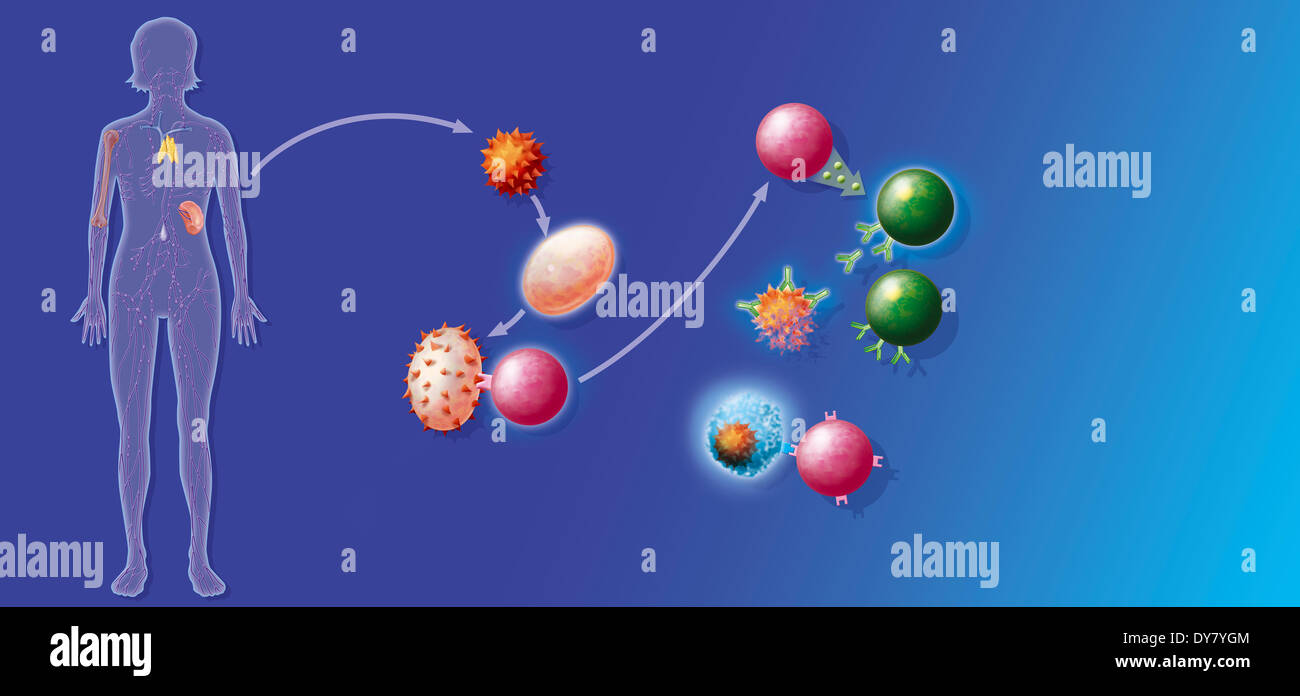 Immune system, illustration Stock Photohttps://www.alamy.com/image-license-details/?v=1https://www.alamy.com/immune-system-illustration-image68402116.html
Immune system, illustration Stock Photohttps://www.alamy.com/image-license-details/?v=1https://www.alamy.com/immune-system-illustration-image68402116.htmlRMDY7YGM–Immune system, illustration
 Illustration of signal proteins called cytokines (red dots) and three types of white blood cell: a macrophage (purple, left), dendritic cells (blue) and t helper cells (purple, red nucleus). Macrophages mainly function to engulf and destroy substances which provoke an immune response. This process is known as phagocytosis. Dendritic cells' primary function is presenting antigens, which are molecules which the immune system recognises as foreign. T helper cells are involved in chemically signalling other immune cells and coordinating the immune response. They do so by releasing cytokines. Stock Photohttps://www.alamy.com/image-license-details/?v=1https://www.alamy.com/illustration-of-signal-proteins-called-cytokines-red-dots-and-three-types-of-white-blood-cell-a-macrophage-purple-left-dendritic-cells-blue-and-t-helper-cells-purple-red-nucleus-macrophages-mainly-function-to-engulf-and-destroy-substances-which-provoke-an-immune-response-this-process-is-known-as-phagocytosis-dendritic-cells-primary-function-is-presenting-antigens-which-are-molecules-which-the-immune-system-recognises-as-foreign-t-helper-cells-are-involved-in-chemically-signalling-other-immune-cells-and-coordinating-the-immune-response-they-do-so-by-releasing-cytokines-image608979859.html
Illustration of signal proteins called cytokines (red dots) and three types of white blood cell: a macrophage (purple, left), dendritic cells (blue) and t helper cells (purple, red nucleus). Macrophages mainly function to engulf and destroy substances which provoke an immune response. This process is known as phagocytosis. Dendritic cells' primary function is presenting antigens, which are molecules which the immune system recognises as foreign. T helper cells are involved in chemically signalling other immune cells and coordinating the immune response. They do so by releasing cytokines. Stock Photohttps://www.alamy.com/image-license-details/?v=1https://www.alamy.com/illustration-of-signal-proteins-called-cytokines-red-dots-and-three-types-of-white-blood-cell-a-macrophage-purple-left-dendritic-cells-blue-and-t-helper-cells-purple-red-nucleus-macrophages-mainly-function-to-engulf-and-destroy-substances-which-provoke-an-immune-response-this-process-is-known-as-phagocytosis-dendritic-cells-primary-function-is-presenting-antigens-which-are-molecules-which-the-immune-system-recognises-as-foreign-t-helper-cells-are-involved-in-chemically-signalling-other-immune-cells-and-coordinating-the-immune-response-they-do-so-by-releasing-cytokines-image608979859.htmlRF2XANC0K–Illustration of signal proteins called cytokines (red dots) and three types of white blood cell: a macrophage (purple, left), dendritic cells (blue) and t helper cells (purple, red nucleus). Macrophages mainly function to engulf and destroy substances which provoke an immune response. This process is known as phagocytosis. Dendritic cells' primary function is presenting antigens, which are molecules which the immune system recognises as foreign. T helper cells are involved in chemically signalling other immune cells and coordinating the immune response. They do so by releasing cytokines.
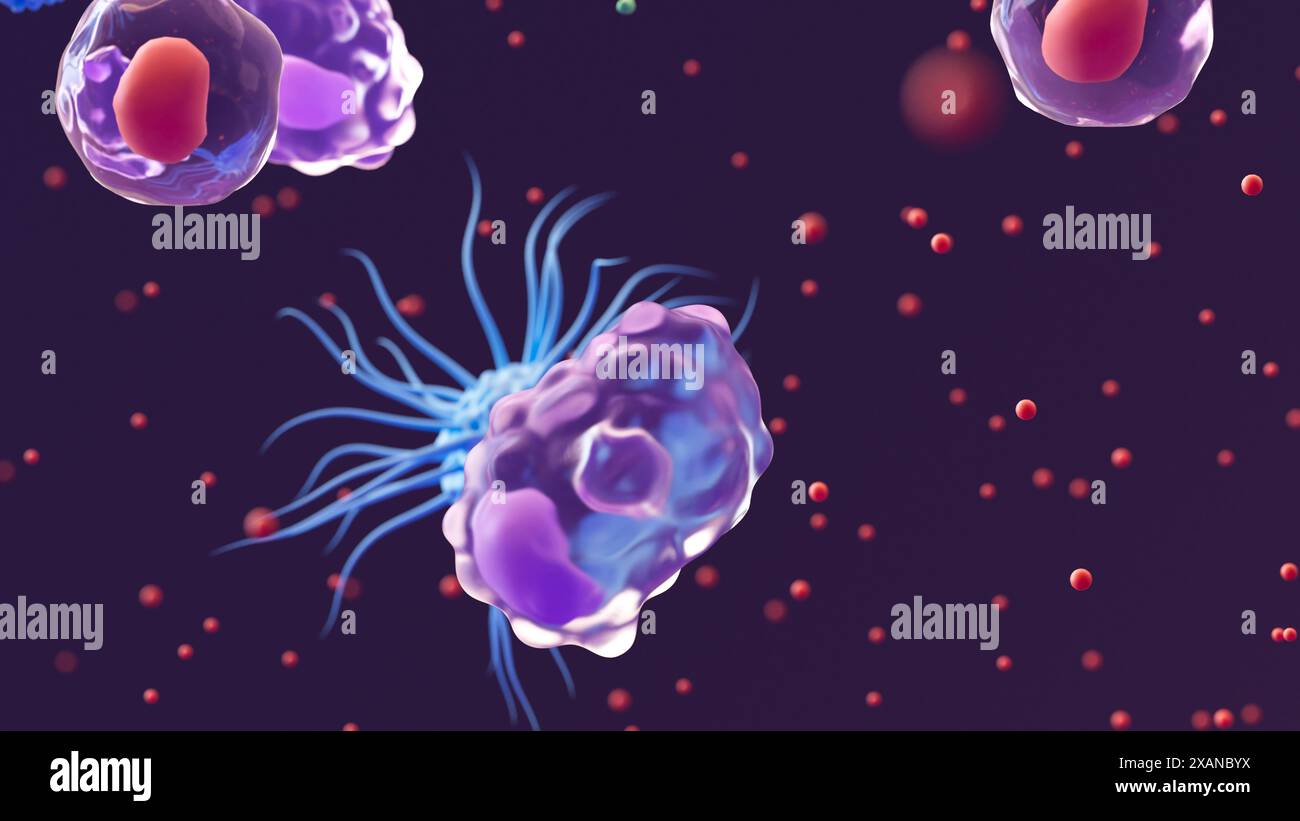 Illustration of three types of white blood cell beginning an immune response: a macrophage (purple), dendritic cell (blue) and t helper cells (red). The T helper cells have released signalling proteins called cytokines (numerous red spheres) which attract other immune cells and coordinate the inflammatory response. Macrophages mainly function to engulf and destroy substances which provoke an immune response. This process is known as phagocytosis. Dendritic cells' primary function is presenting antigens, which are molecules which the immune system recognises as foreign. Stock Photohttps://www.alamy.com/image-license-details/?v=1https://www.alamy.com/illustration-of-three-types-of-white-blood-cell-beginning-an-immune-response-a-macrophage-purple-dendritic-cell-blue-and-t-helper-cells-red-the-t-helper-cells-have-released-signalling-proteins-called-cytokines-numerous-red-spheres-which-attract-other-immune-cells-and-coordinate-the-inflammatory-response-macrophages-mainly-function-to-engulf-and-destroy-substances-which-provoke-an-immune-response-this-process-is-known-as-phagocytosis-dendritic-cells-primary-function-is-presenting-antigens-which-are-molecules-which-the-immune-system-recognises-as-foreign-image608979838.html
Illustration of three types of white blood cell beginning an immune response: a macrophage (purple), dendritic cell (blue) and t helper cells (red). The T helper cells have released signalling proteins called cytokines (numerous red spheres) which attract other immune cells and coordinate the inflammatory response. Macrophages mainly function to engulf and destroy substances which provoke an immune response. This process is known as phagocytosis. Dendritic cells' primary function is presenting antigens, which are molecules which the immune system recognises as foreign. Stock Photohttps://www.alamy.com/image-license-details/?v=1https://www.alamy.com/illustration-of-three-types-of-white-blood-cell-beginning-an-immune-response-a-macrophage-purple-dendritic-cell-blue-and-t-helper-cells-red-the-t-helper-cells-have-released-signalling-proteins-called-cytokines-numerous-red-spheres-which-attract-other-immune-cells-and-coordinate-the-inflammatory-response-macrophages-mainly-function-to-engulf-and-destroy-substances-which-provoke-an-immune-response-this-process-is-known-as-phagocytosis-dendritic-cells-primary-function-is-presenting-antigens-which-are-molecules-which-the-immune-system-recognises-as-foreign-image608979838.htmlRF2XANBYX–Illustration of three types of white blood cell beginning an immune response: a macrophage (purple), dendritic cell (blue) and t helper cells (red). The T helper cells have released signalling proteins called cytokines (numerous red spheres) which attract other immune cells and coordinate the inflammatory response. Macrophages mainly function to engulf and destroy substances which provoke an immune response. This process is known as phagocytosis. Dendritic cells' primary function is presenting antigens, which are molecules which the immune system recognises as foreign.
 Lung cancer (LC) in the lung tissue isometric view 3d illustration Stock Photohttps://www.alamy.com/image-license-details/?v=1https://www.alamy.com/lung-cancer-lc-in-the-lung-tissue-isometric-view-3d-illustration-image633068245.html
Lung cancer (LC) in the lung tissue isometric view 3d illustration Stock Photohttps://www.alamy.com/image-license-details/?v=1https://www.alamy.com/lung-cancer-lc-in-the-lung-tissue-isometric-view-3d-illustration-image633068245.htmlRF2YNXN05–Lung cancer (LC) in the lung tissue isometric view 3d illustration
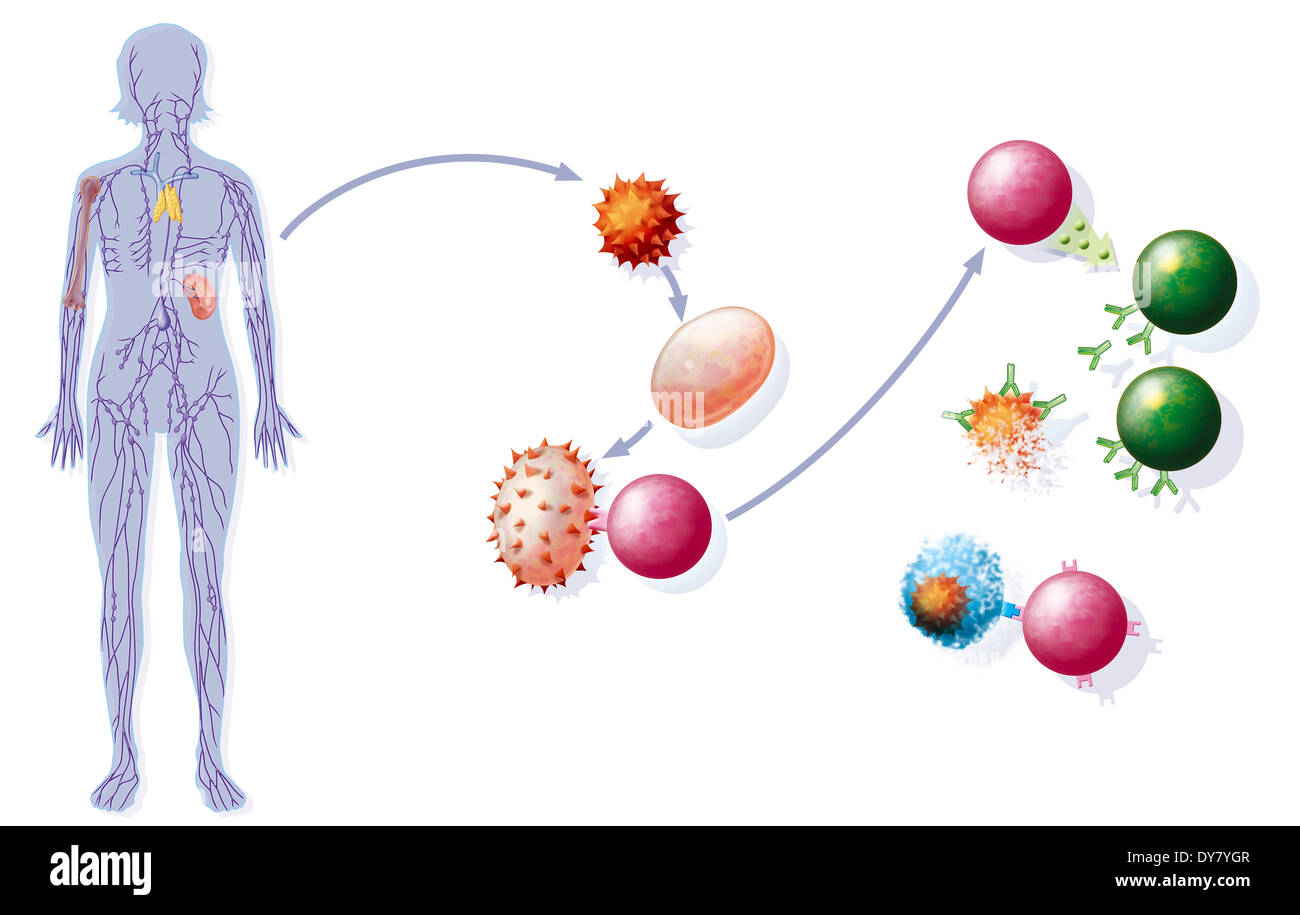 Immune system, illustration Stock Photohttps://www.alamy.com/image-license-details/?v=1https://www.alamy.com/immune-system-illustration-image68402119.html
Immune system, illustration Stock Photohttps://www.alamy.com/image-license-details/?v=1https://www.alamy.com/immune-system-illustration-image68402119.htmlRMDY7YGR–Immune system, illustration
 Illustration of three types of white blood cell responding to infection by bacteria (green): macrophages (purple), dendritic cells (blue) and t helper cells (red). The T helper cells have released signalling proteins called cytokines (numerous red spheres) which attract other immune cells and coordinate the inflammatory response. Macrophages mainly function to engulf and destroy substances which provoke an immune response. This process is known as phagocytosis. Dendritic cells' primary function is presenting antigens, which are molecules which the immune system recognises as foreign. Stock Photohttps://www.alamy.com/image-license-details/?v=1https://www.alamy.com/illustration-of-three-types-of-white-blood-cell-responding-to-infection-by-bacteria-green-macrophages-purple-dendritic-cells-blue-and-t-helper-cells-red-the-t-helper-cells-have-released-signalling-proteins-called-cytokines-numerous-red-spheres-which-attract-other-immune-cells-and-coordinate-the-inflammatory-response-macrophages-mainly-function-to-engulf-and-destroy-substances-which-provoke-an-immune-response-this-process-is-known-as-phagocytosis-dendritic-cells-primary-function-is-presenting-antigens-which-are-molecules-which-the-immune-system-recognises-as-foreign-image608979835.html
Illustration of three types of white blood cell responding to infection by bacteria (green): macrophages (purple), dendritic cells (blue) and t helper cells (red). The T helper cells have released signalling proteins called cytokines (numerous red spheres) which attract other immune cells and coordinate the inflammatory response. Macrophages mainly function to engulf and destroy substances which provoke an immune response. This process is known as phagocytosis. Dendritic cells' primary function is presenting antigens, which are molecules which the immune system recognises as foreign. Stock Photohttps://www.alamy.com/image-license-details/?v=1https://www.alamy.com/illustration-of-three-types-of-white-blood-cell-responding-to-infection-by-bacteria-green-macrophages-purple-dendritic-cells-blue-and-t-helper-cells-red-the-t-helper-cells-have-released-signalling-proteins-called-cytokines-numerous-red-spheres-which-attract-other-immune-cells-and-coordinate-the-inflammatory-response-macrophages-mainly-function-to-engulf-and-destroy-substances-which-provoke-an-immune-response-this-process-is-known-as-phagocytosis-dendritic-cells-primary-function-is-presenting-antigens-which-are-molecules-which-the-immune-system-recognises-as-foreign-image608979835.htmlRF2XANBYR–Illustration of three types of white blood cell responding to infection by bacteria (green): macrophages (purple), dendritic cells (blue) and t helper cells (red). The T helper cells have released signalling proteins called cytokines (numerous red spheres) which attract other immune cells and coordinate the inflammatory response. Macrophages mainly function to engulf and destroy substances which provoke an immune response. This process is known as phagocytosis. Dendritic cells' primary function is presenting antigens, which are molecules which the immune system recognises as foreign.
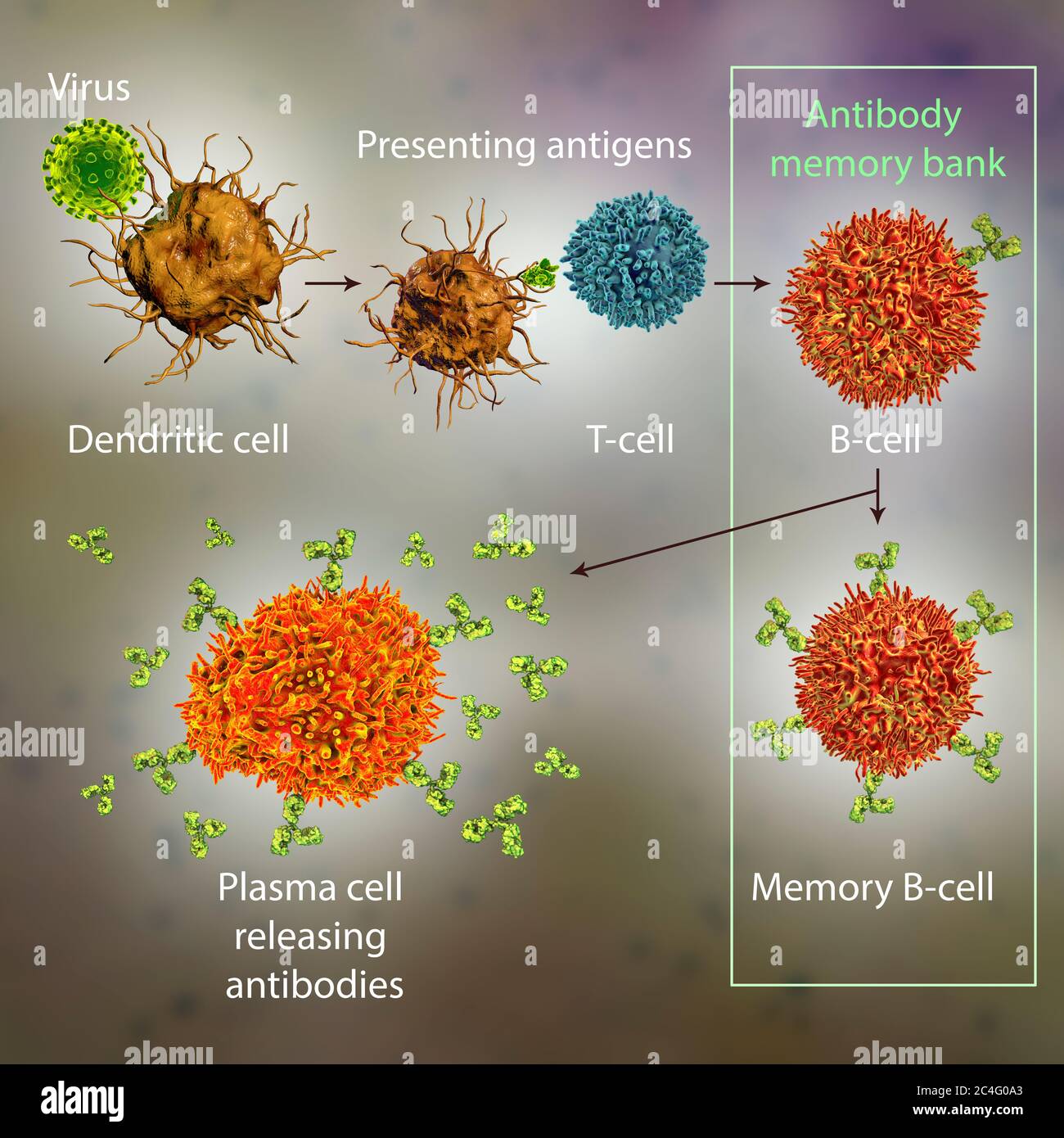 Mechanisms of immune defence against viruses, computer illustration. Dendritic cells recognise viruses and present information about their antigens to T-cells (T-lymphocytes). T-cells provide information about the viral antigens to B-cells (B-lymphocytes) that are transformed to memory B-cells (store information about the virus) and in case of activation, they are transformed to plasma cells secreting protective antibodies. Stock Photohttps://www.alamy.com/image-license-details/?v=1https://www.alamy.com/mechanisms-of-immune-defence-against-viruses-computer-illustration-dendritic-cells-recognise-viruses-and-present-information-about-their-antigens-to-t-cells-t-lymphocytes-t-cells-provide-information-about-the-viral-antigens-to-b-cells-b-lymphocytes-that-are-transformed-to-memory-b-cells-store-information-about-the-virus-and-in-case-of-activation-they-are-transformed-to-plasma-cells-secreting-protective-antibodies-image364227867.html
Mechanisms of immune defence against viruses, computer illustration. Dendritic cells recognise viruses and present information about their antigens to T-cells (T-lymphocytes). T-cells provide information about the viral antigens to B-cells (B-lymphocytes) that are transformed to memory B-cells (store information about the virus) and in case of activation, they are transformed to plasma cells secreting protective antibodies. Stock Photohttps://www.alamy.com/image-license-details/?v=1https://www.alamy.com/mechanisms-of-immune-defence-against-viruses-computer-illustration-dendritic-cells-recognise-viruses-and-present-information-about-their-antigens-to-t-cells-t-lymphocytes-t-cells-provide-information-about-the-viral-antigens-to-b-cells-b-lymphocytes-that-are-transformed-to-memory-b-cells-store-information-about-the-virus-and-in-case-of-activation-they-are-transformed-to-plasma-cells-secreting-protective-antibodies-image364227867.htmlRF2C4G0A3–Mechanisms of immune defence against viruses, computer illustration. Dendritic cells recognise viruses and present information about their antigens to T-cells (T-lymphocytes). T-cells provide information about the viral antigens to B-cells (B-lymphocytes) that are transformed to memory B-cells (store information about the virus) and in case of activation, they are transformed to plasma cells secreting protective antibodies.
 Mechanisms of immune defence against viruses, computer illustration. Dendritic cells recognise viruses and present information about their antigens to T-cells (T-lymphocytes). T-cells provide information about the viral antigens to B-cells (B-lymphocytes) that are transformed to memory B-cells (store information about the virus) and in case of activation, they are transformed to plasma cells secreting protective antibodies. Stock Photohttps://www.alamy.com/image-license-details/?v=1https://www.alamy.com/mechanisms-of-immune-defence-against-viruses-computer-illustration-dendritic-cells-recognise-viruses-and-present-information-about-their-antigens-to-t-cells-t-lymphocytes-t-cells-provide-information-about-the-viral-antigens-to-b-cells-b-lymphocytes-that-are-transformed-to-memory-b-cells-store-information-about-the-virus-and-in-case-of-activation-they-are-transformed-to-plasma-cells-secreting-protective-antibodies-image364227857.html
Mechanisms of immune defence against viruses, computer illustration. Dendritic cells recognise viruses and present information about their antigens to T-cells (T-lymphocytes). T-cells provide information about the viral antigens to B-cells (B-lymphocytes) that are transformed to memory B-cells (store information about the virus) and in case of activation, they are transformed to plasma cells secreting protective antibodies. Stock Photohttps://www.alamy.com/image-license-details/?v=1https://www.alamy.com/mechanisms-of-immune-defence-against-viruses-computer-illustration-dendritic-cells-recognise-viruses-and-present-information-about-their-antigens-to-t-cells-t-lymphocytes-t-cells-provide-information-about-the-viral-antigens-to-b-cells-b-lymphocytes-that-are-transformed-to-memory-b-cells-store-information-about-the-virus-and-in-case-of-activation-they-are-transformed-to-plasma-cells-secreting-protective-antibodies-image364227857.htmlRF2C4G09N–Mechanisms of immune defence against viruses, computer illustration. Dendritic cells recognise viruses and present information about their antigens to T-cells (T-lymphocytes). T-cells provide information about the viral antigens to B-cells (B-lymphocytes) that are transformed to memory B-cells (store information about the virus) and in case of activation, they are transformed to plasma cells secreting protective antibodies.
 Dendritic cell,computer illustration.A dendritic cell is a type of white blood cell.It is an antigen- presenting cell (APC),which presents antigens to T lymphocytes,which can only recognise antigens when they are presented by APC. Stock Photohttps://www.alamy.com/image-license-details/?v=1https://www.alamy.com/stock-image-dendritic-cellcomputer-illustrationa-dendritic-cell-is-a-type-of-white-167714482.html
Dendritic cell,computer illustration.A dendritic cell is a type of white blood cell.It is an antigen- presenting cell (APC),which presents antigens to T lymphocytes,which can only recognise antigens when they are presented by APC. Stock Photohttps://www.alamy.com/image-license-details/?v=1https://www.alamy.com/stock-image-dendritic-cellcomputer-illustrationa-dendritic-cell-is-a-type-of-white-167714482.htmlRFKMT1EX–Dendritic cell,computer illustration.A dendritic cell is a type of white blood cell.It is an antigen- presenting cell (APC),which presents antigens to T lymphocytes,which can only recognise antigens when they are presented by APC.